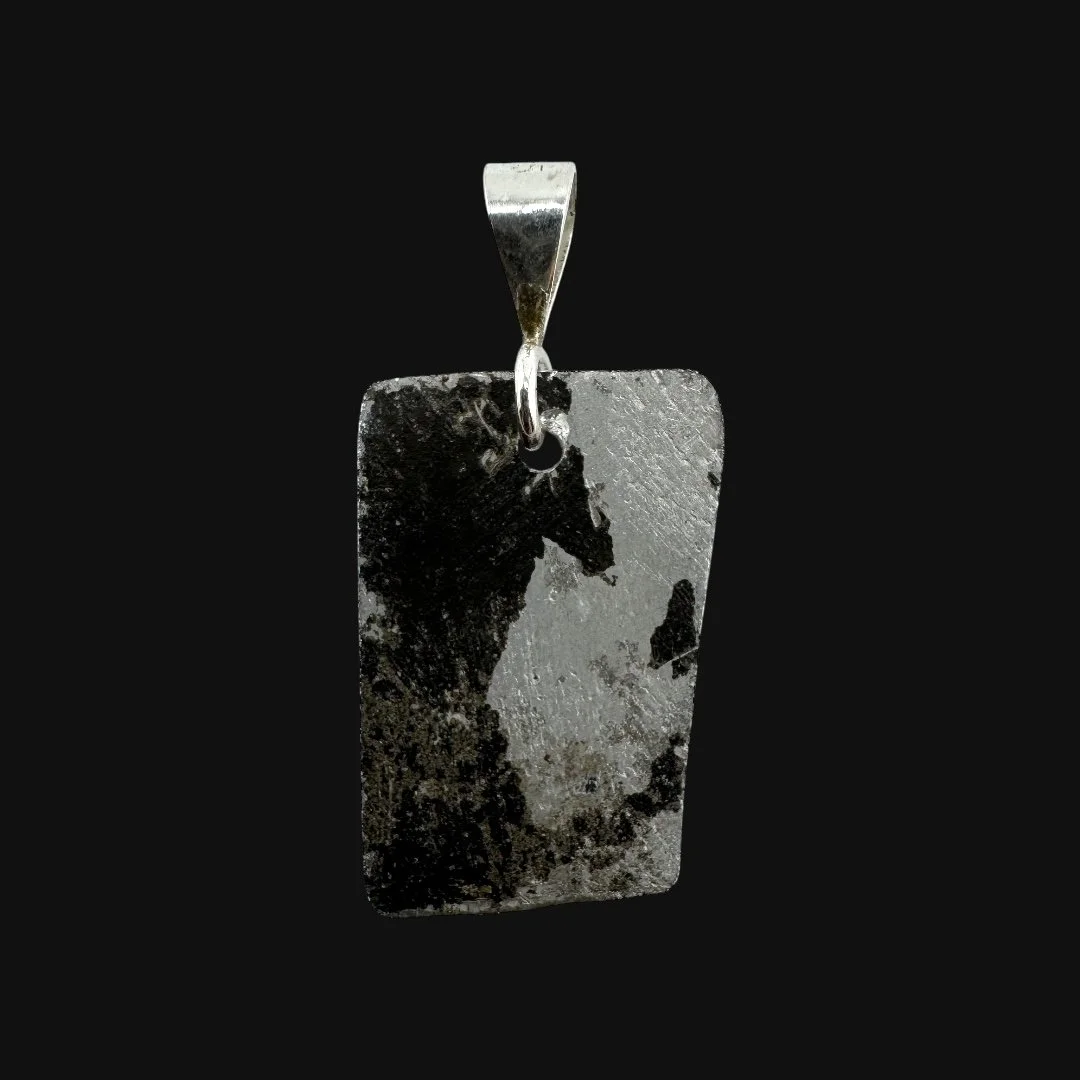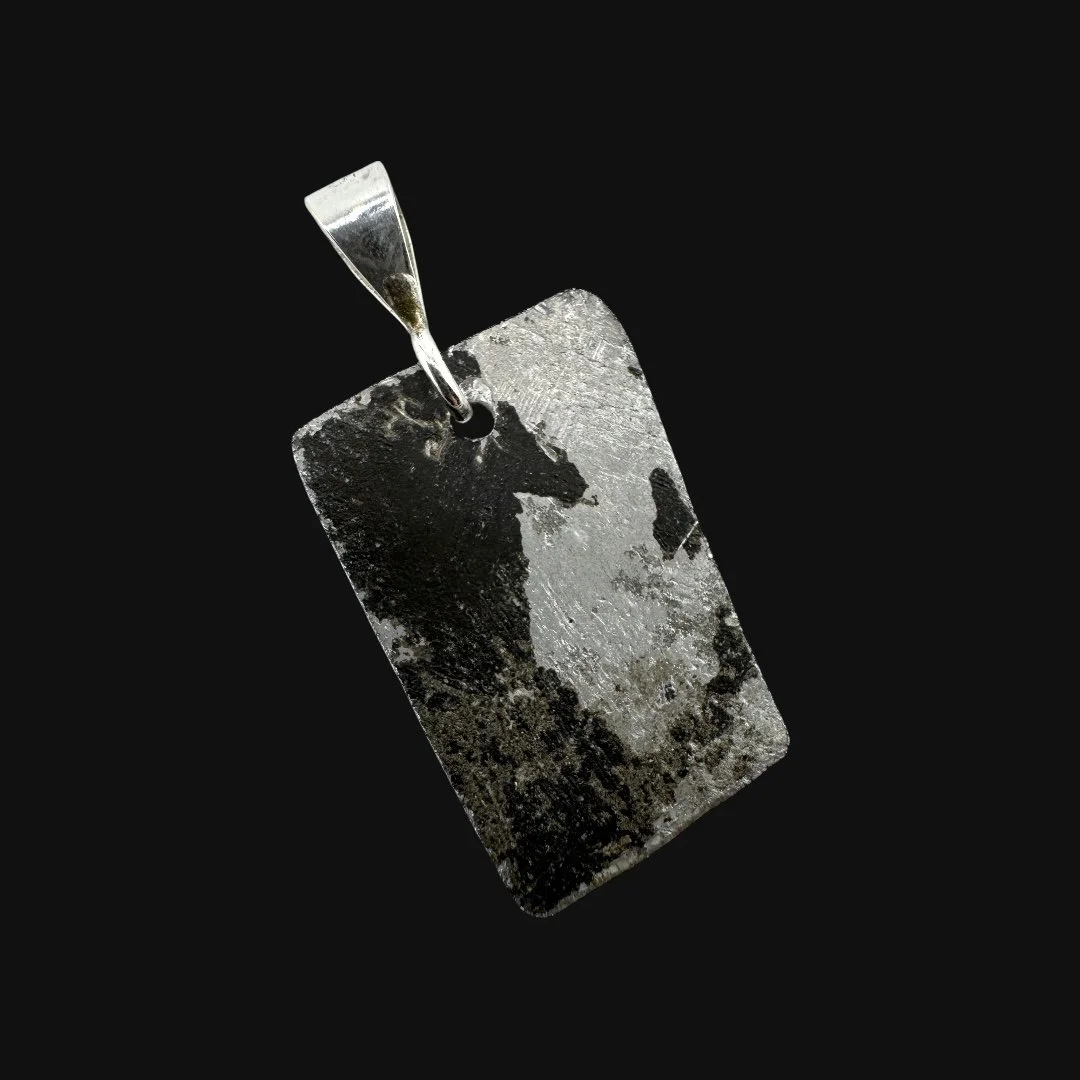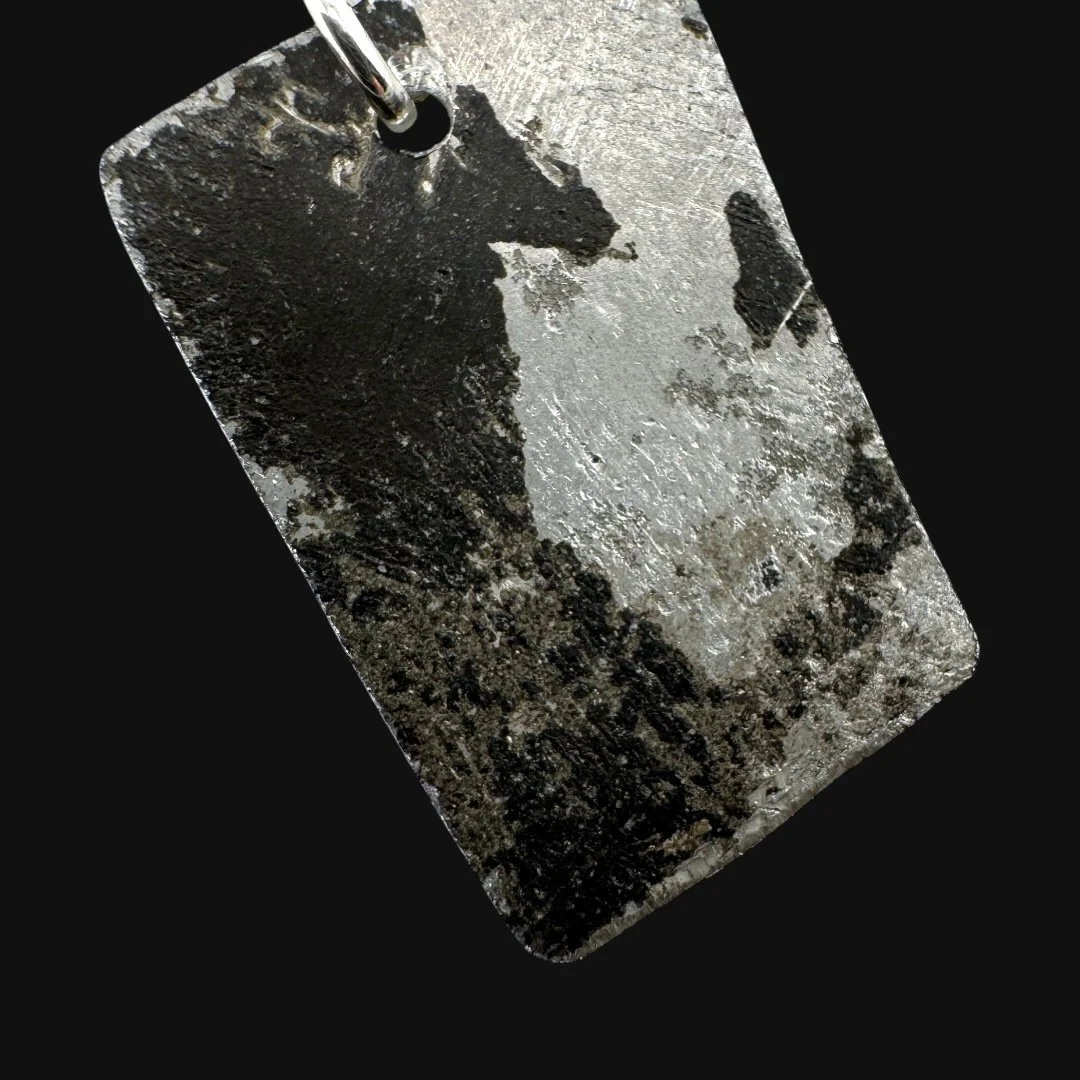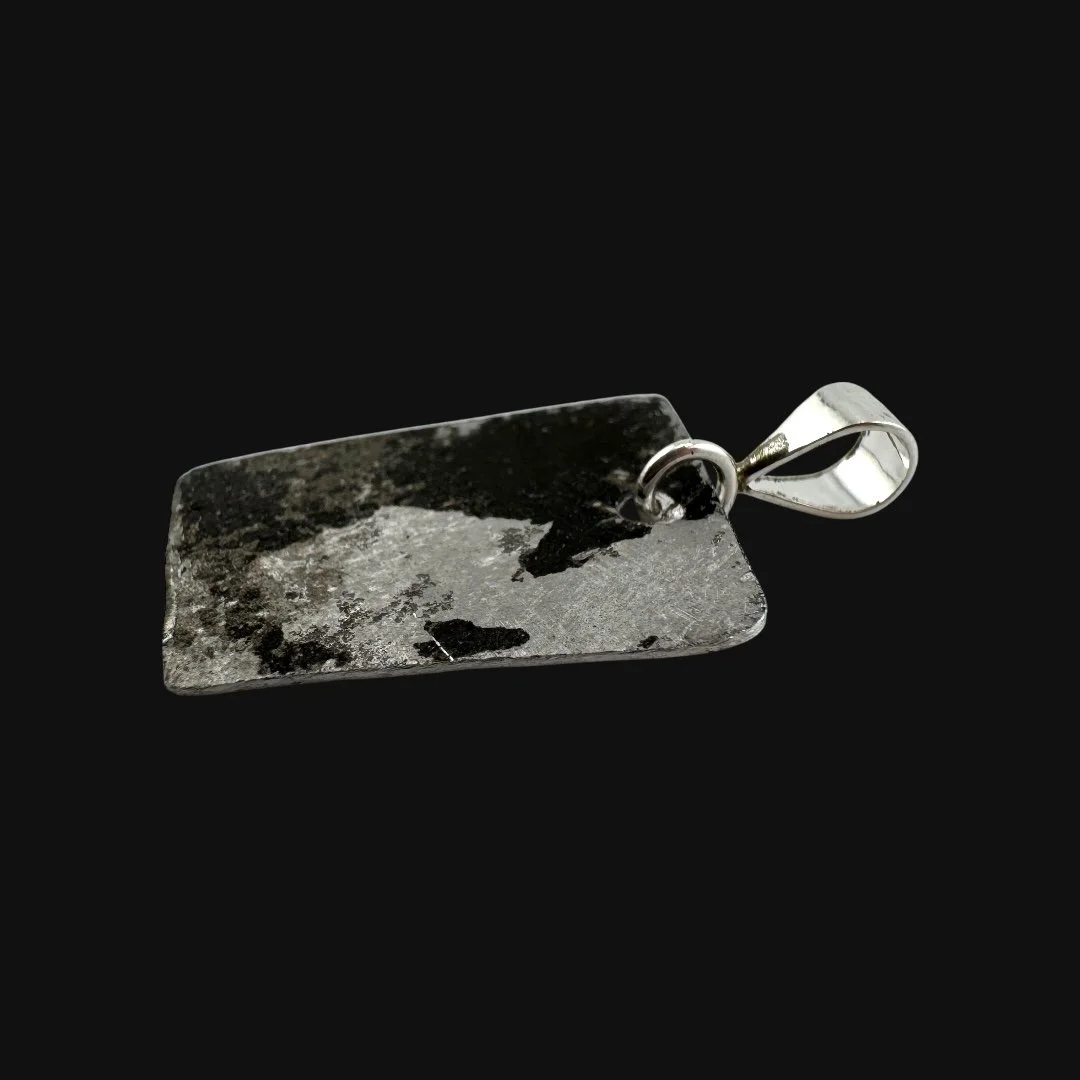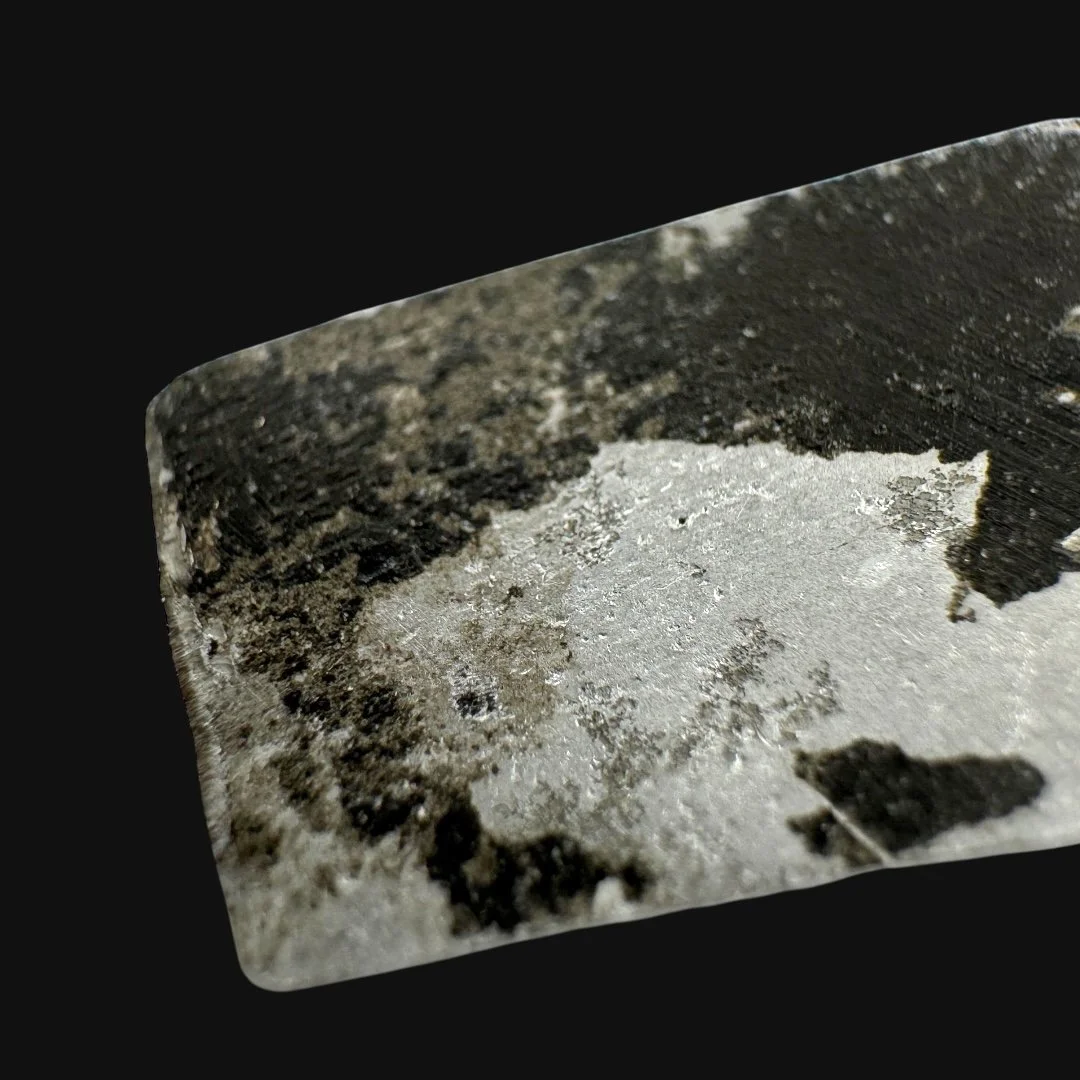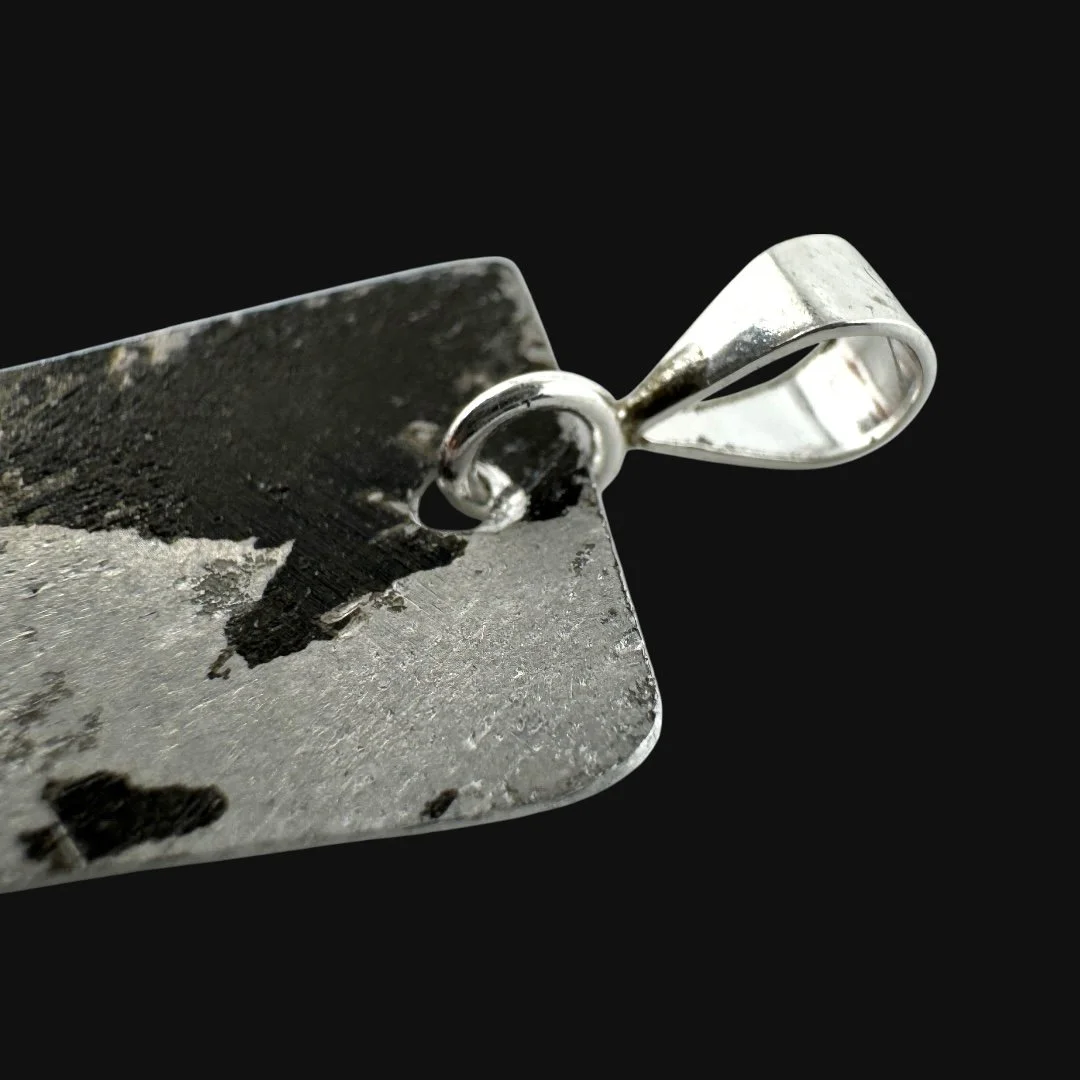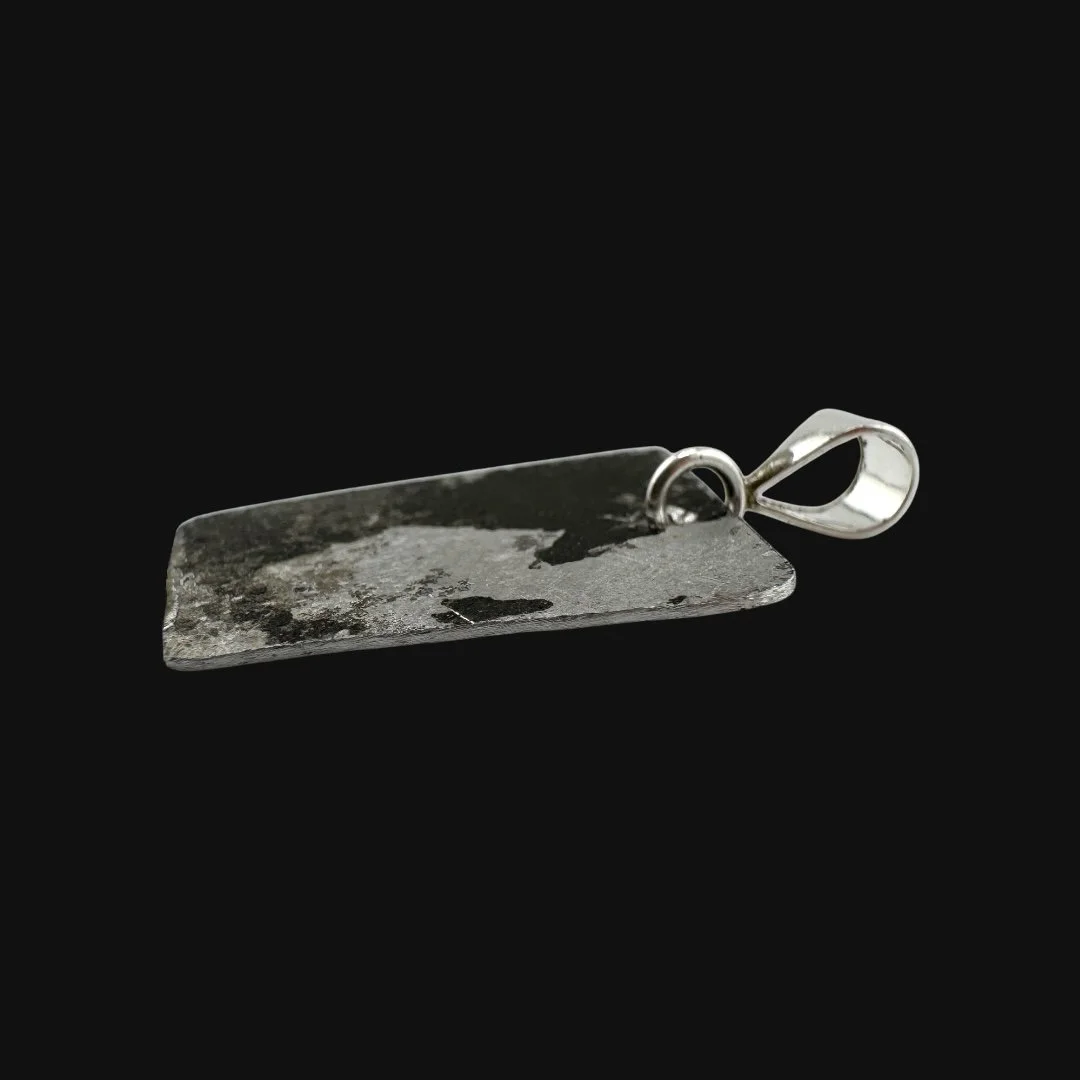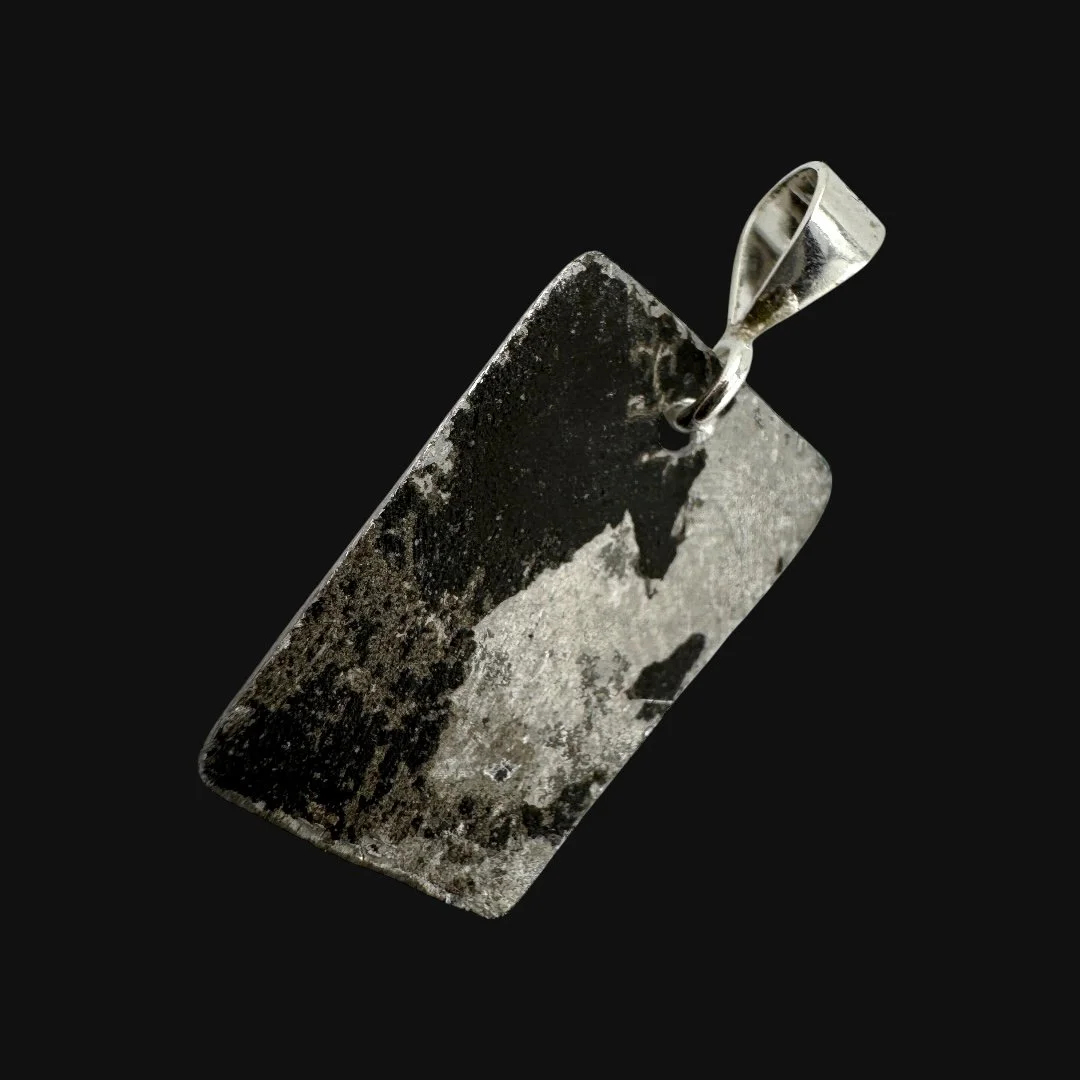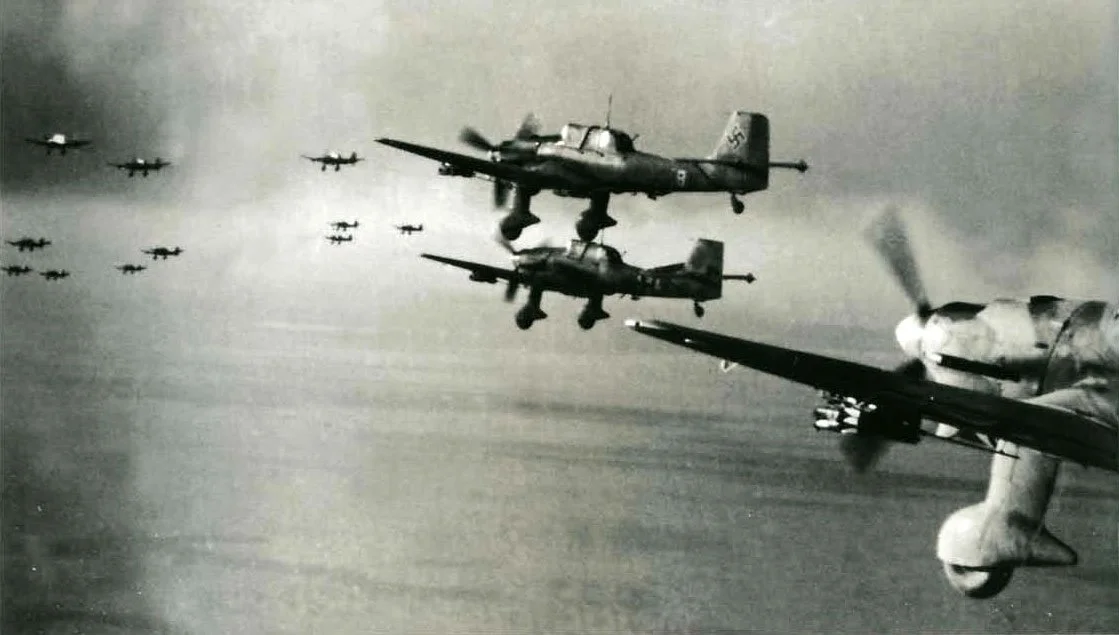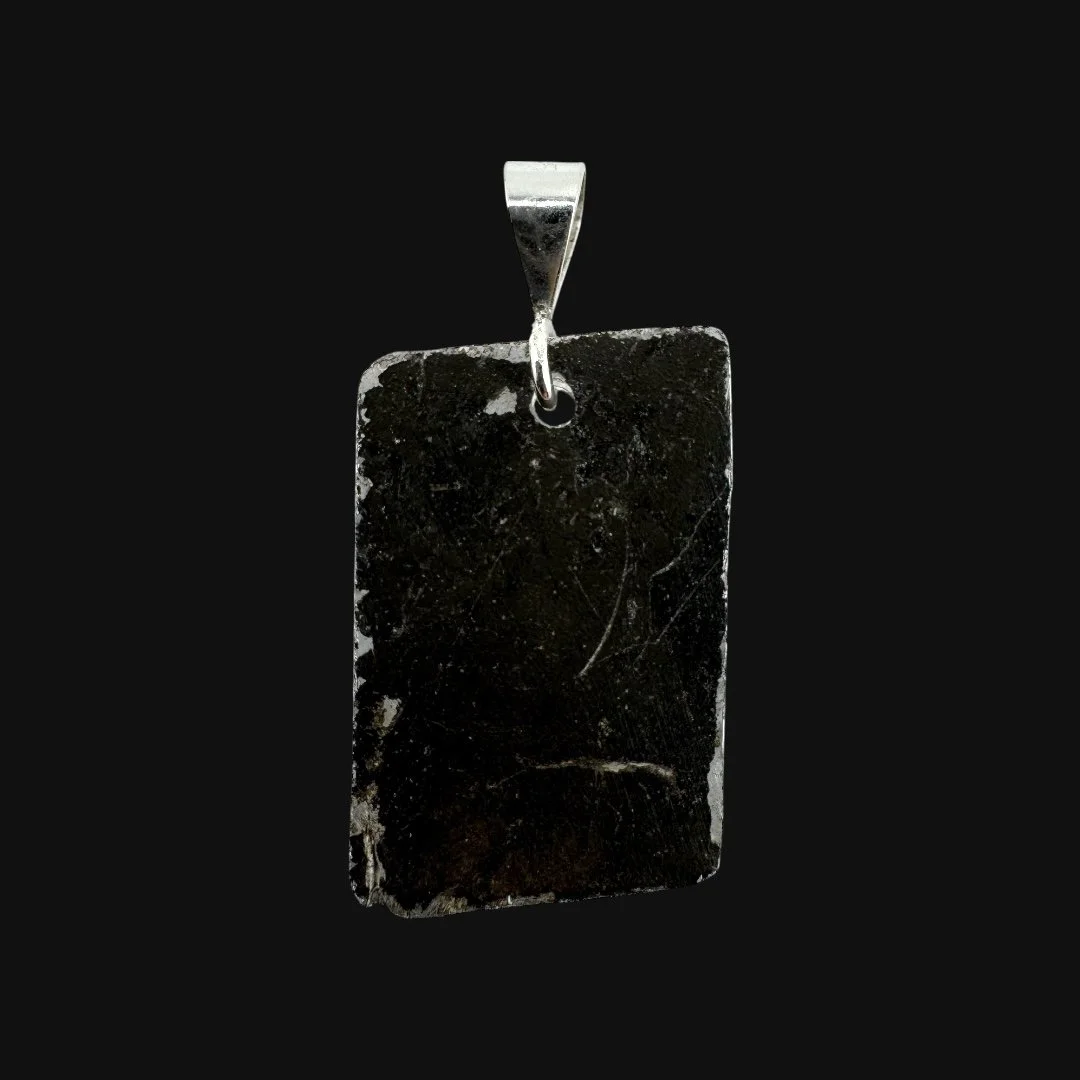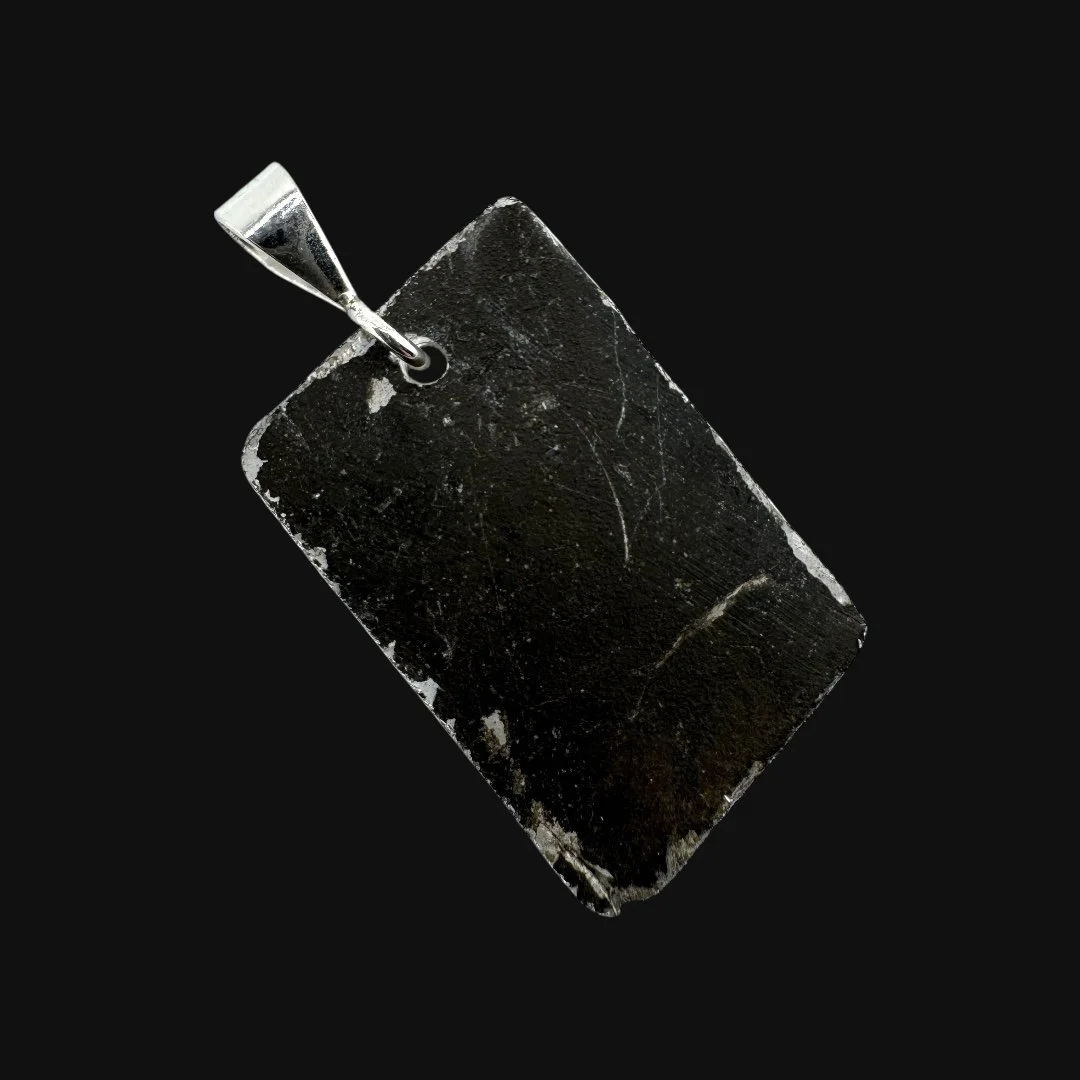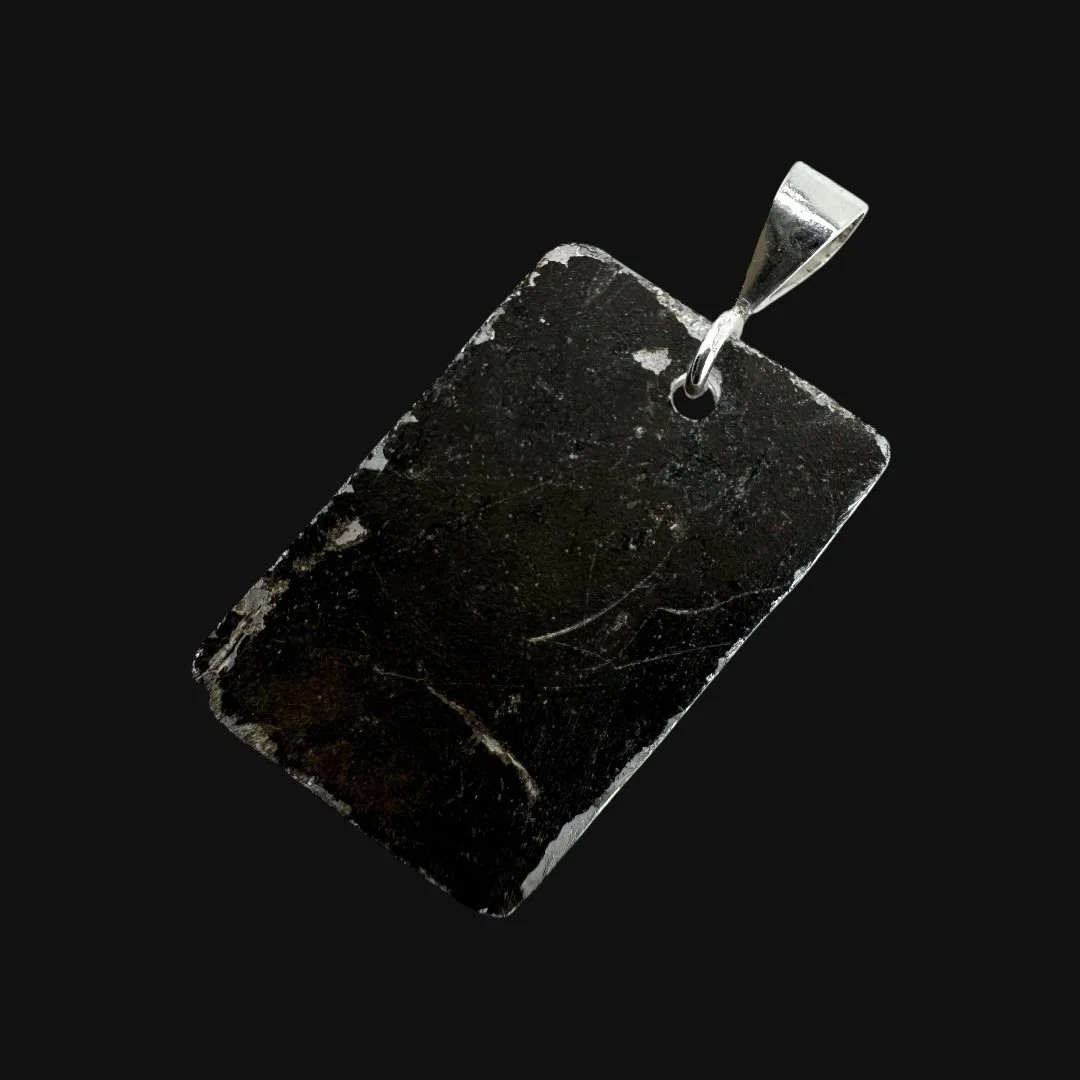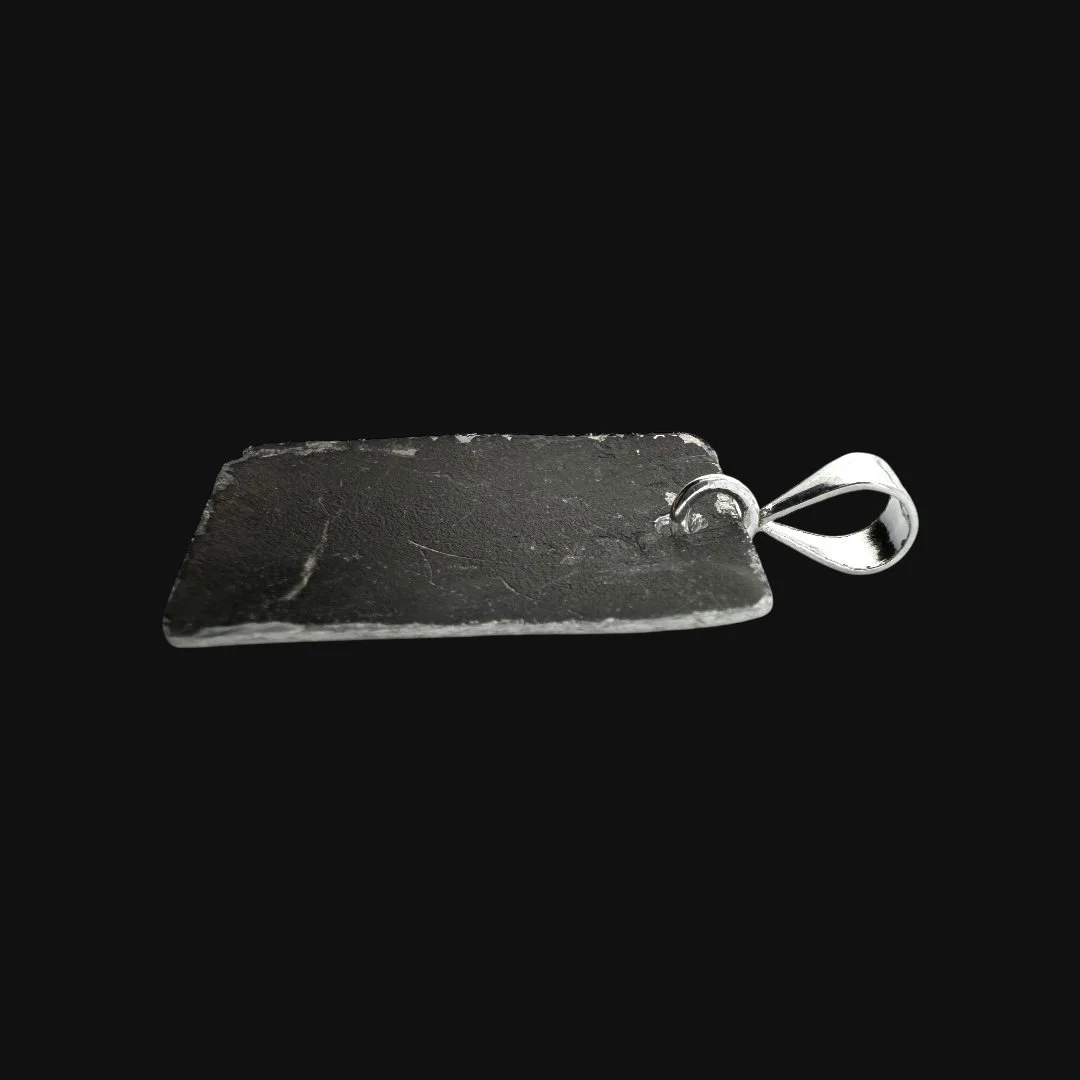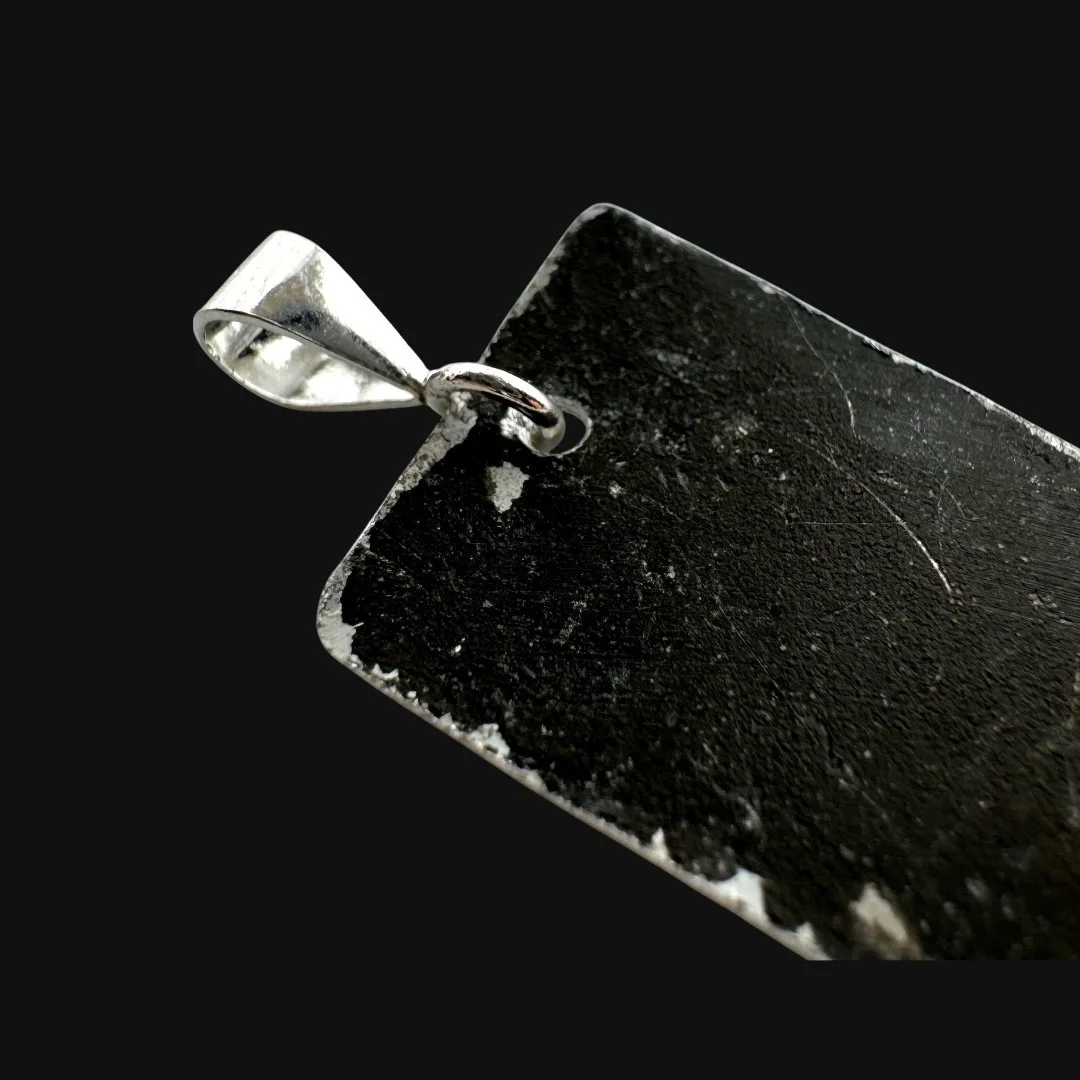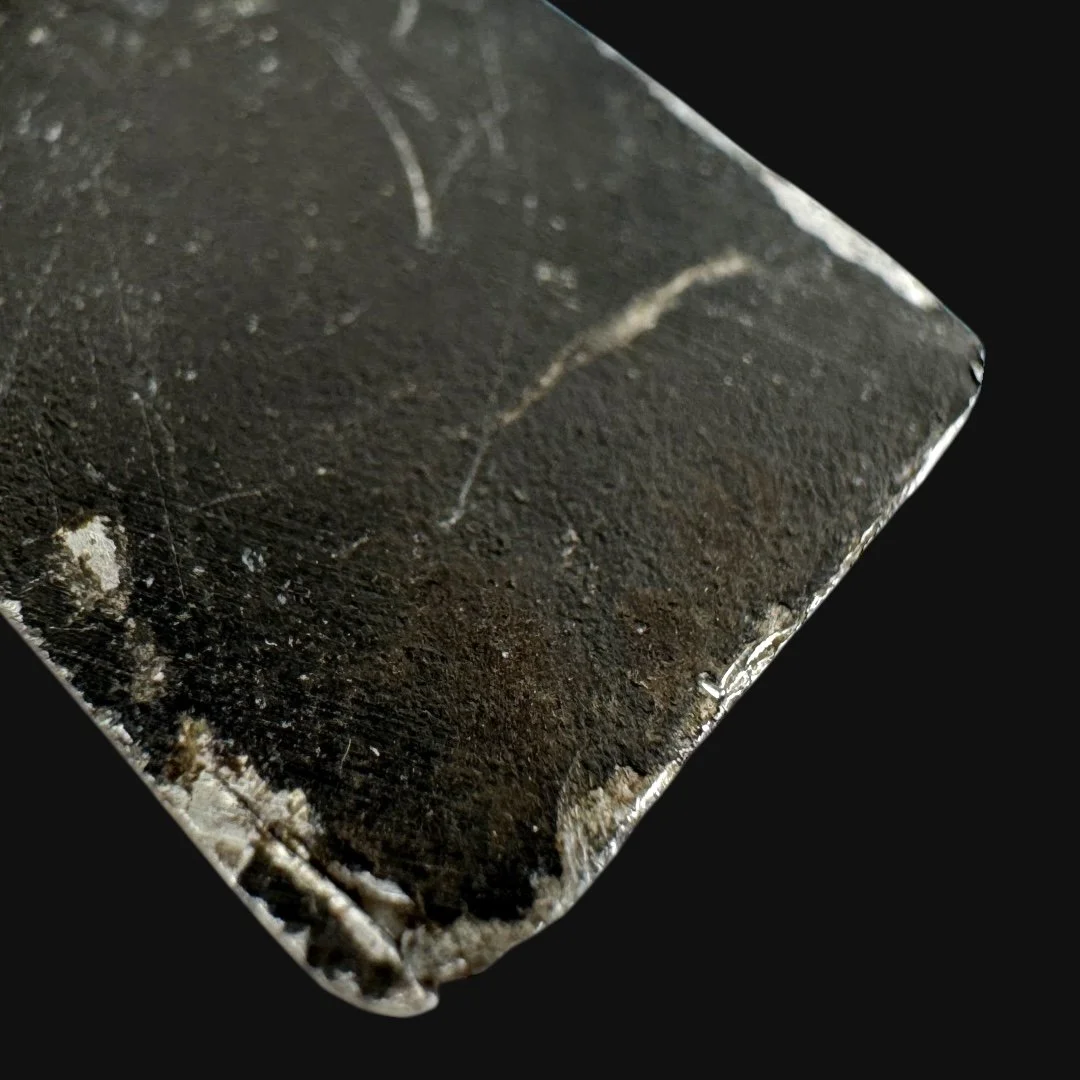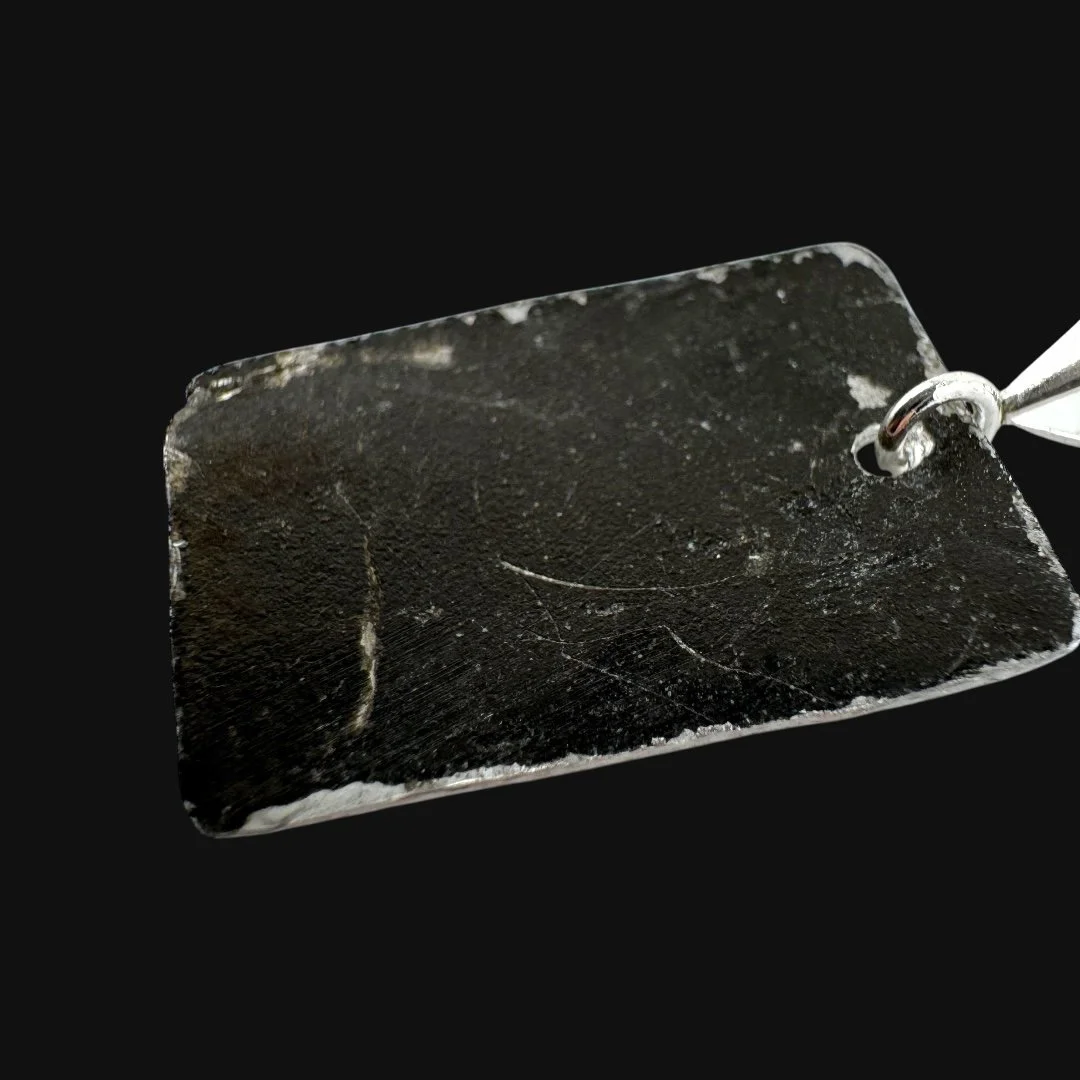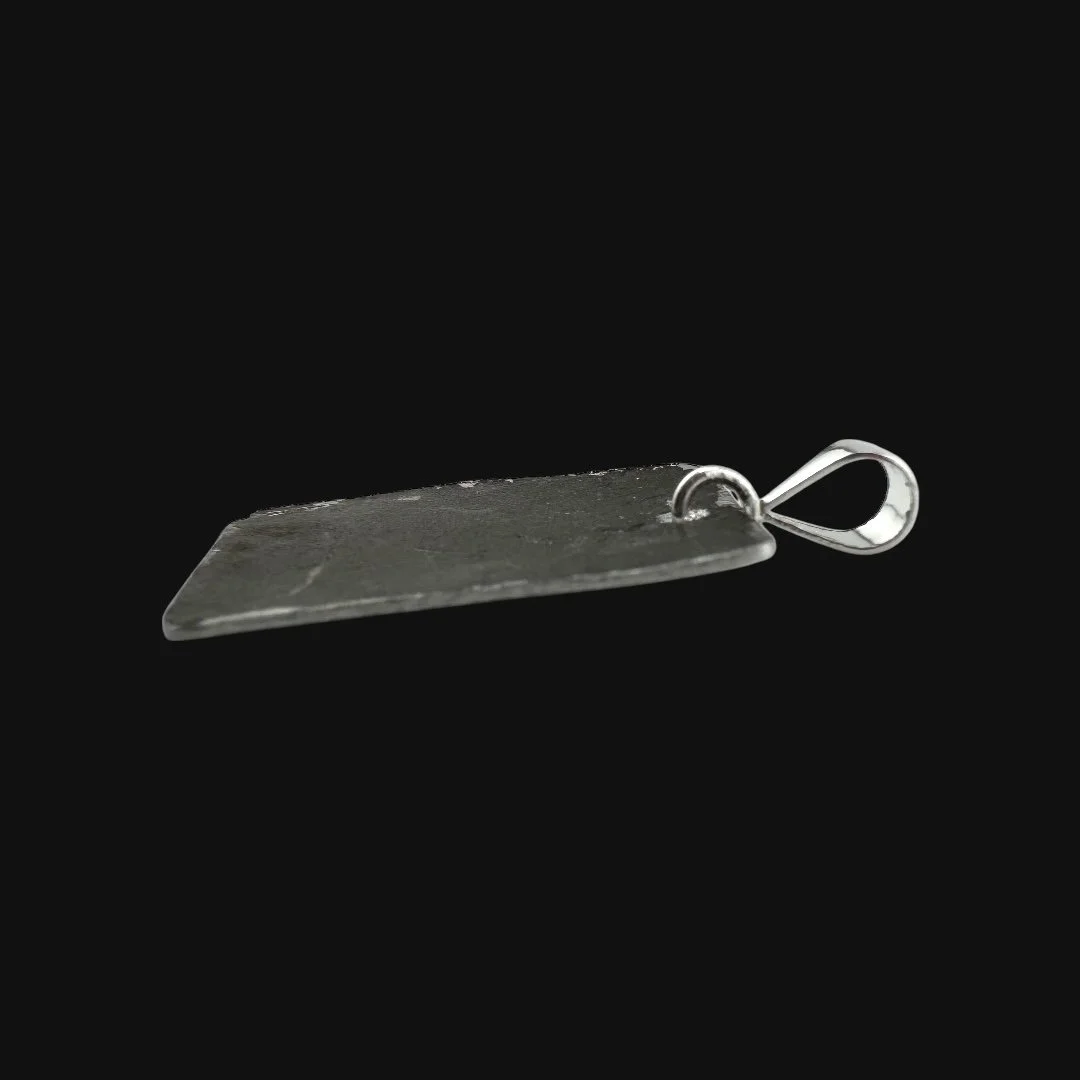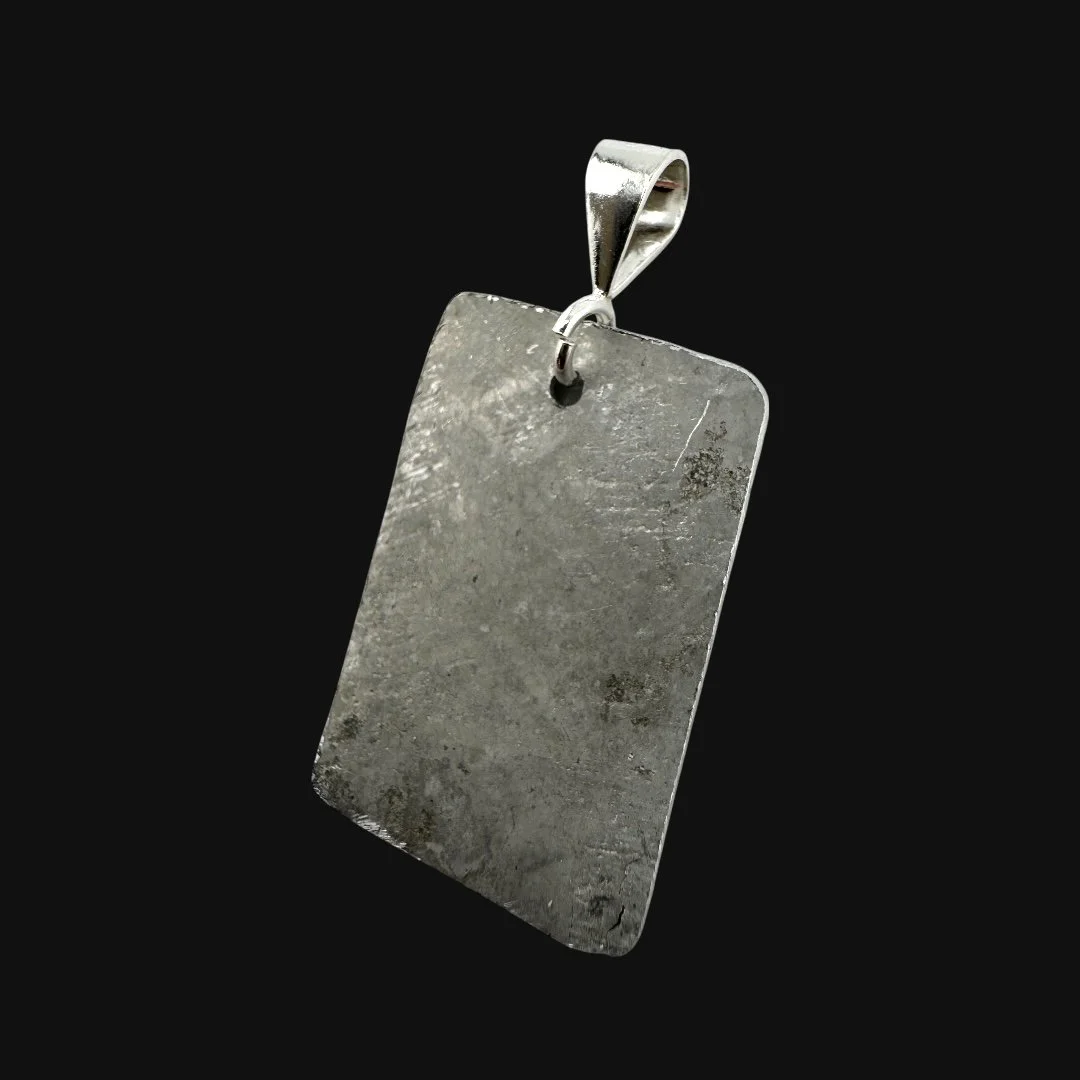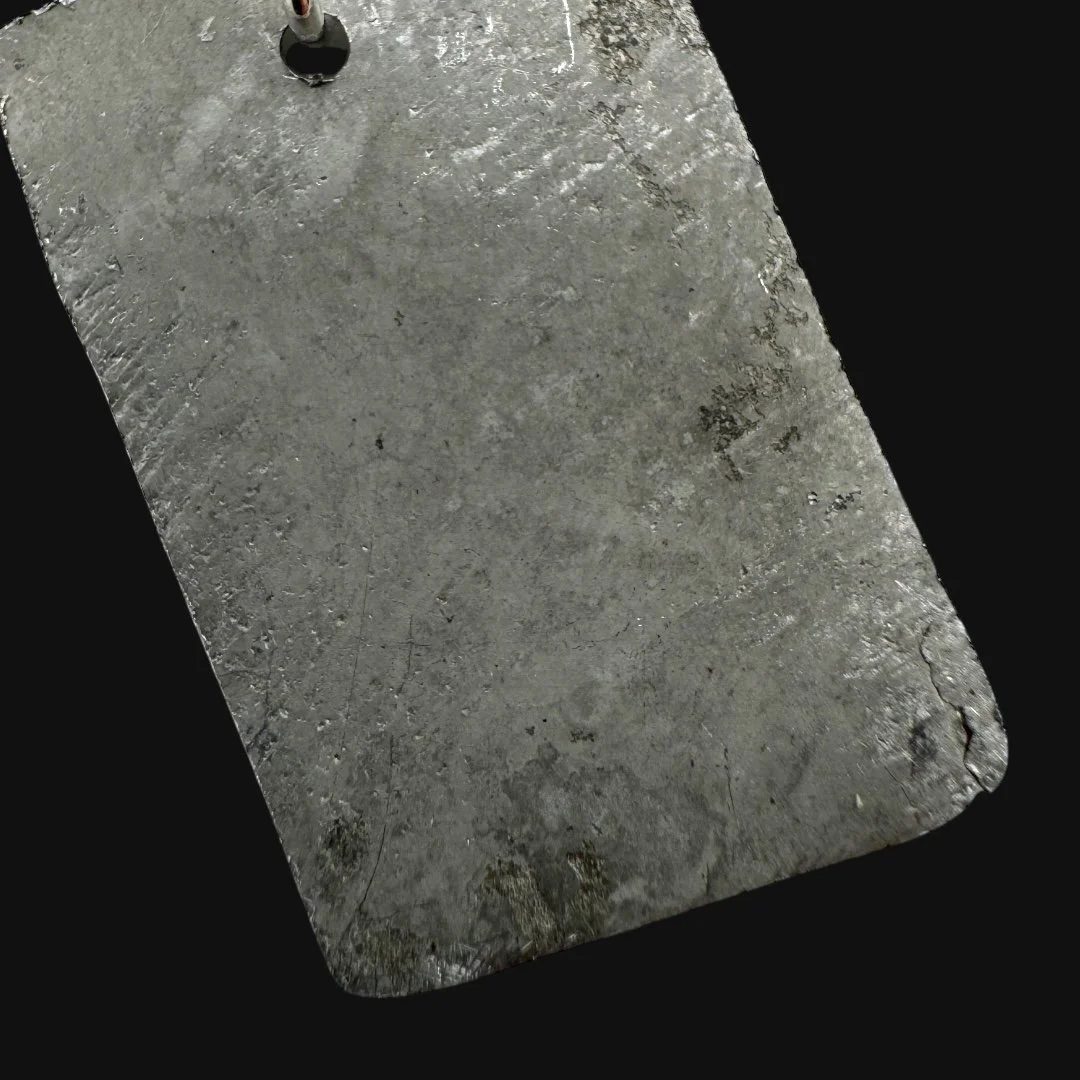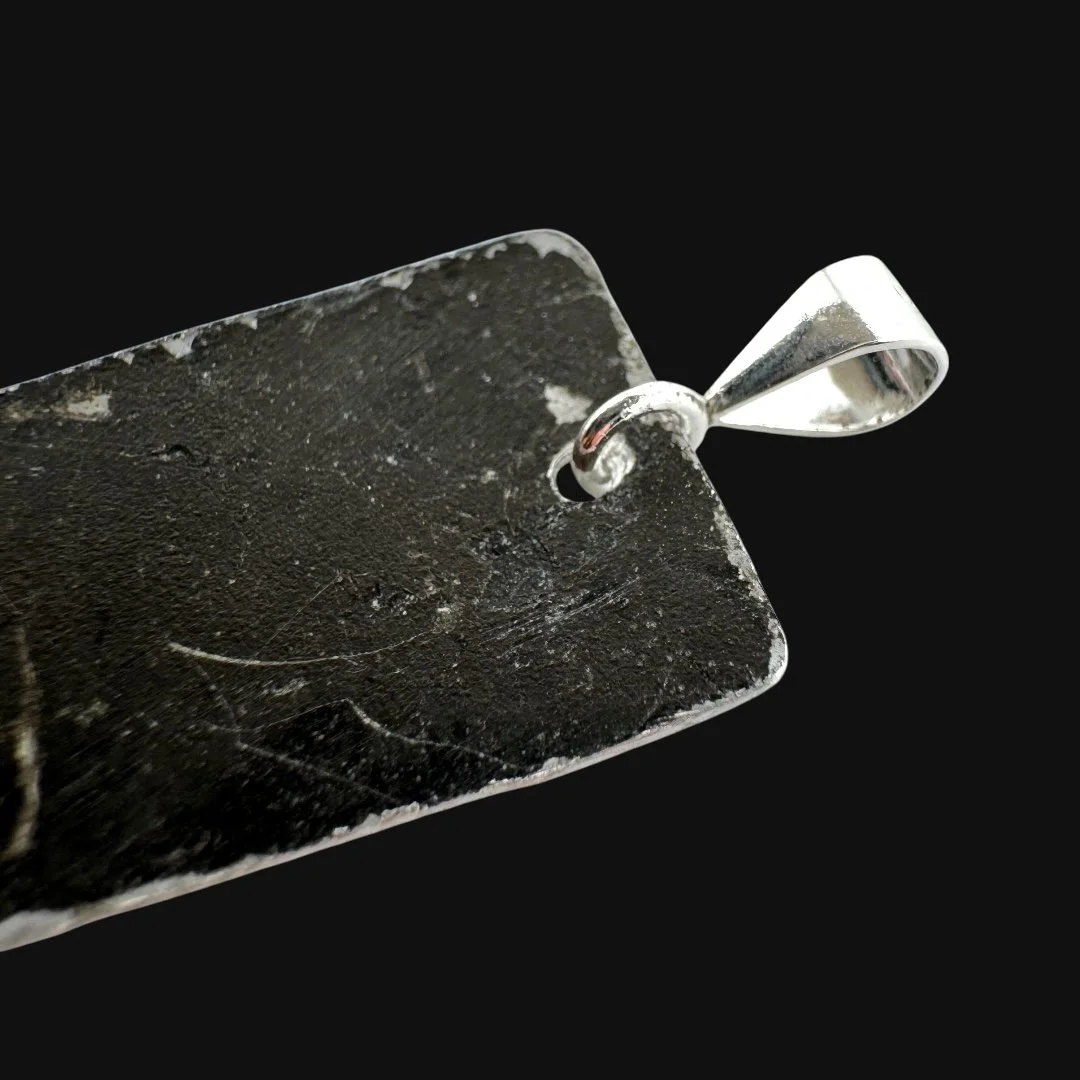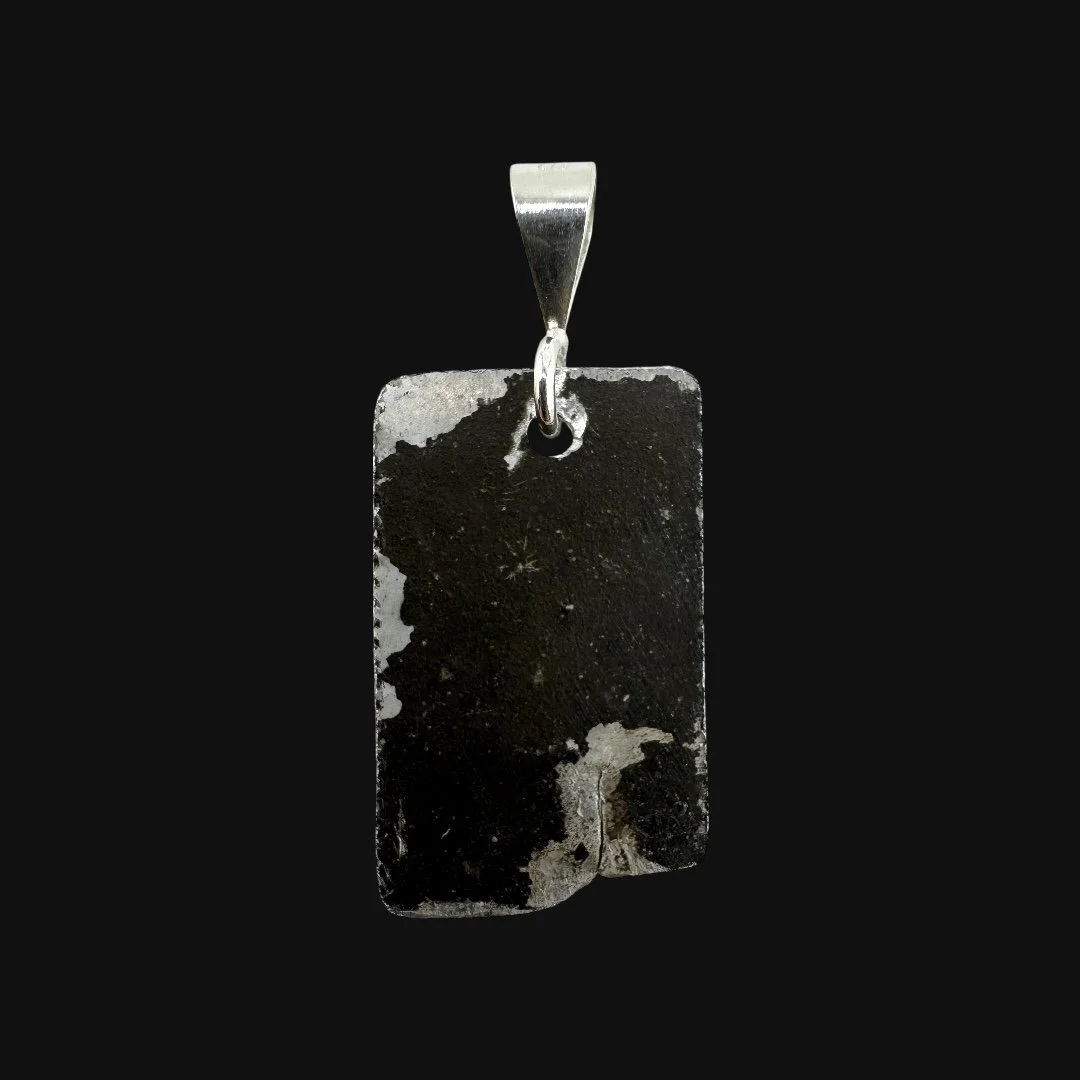 Image 1 of 12
Image 1 of 12

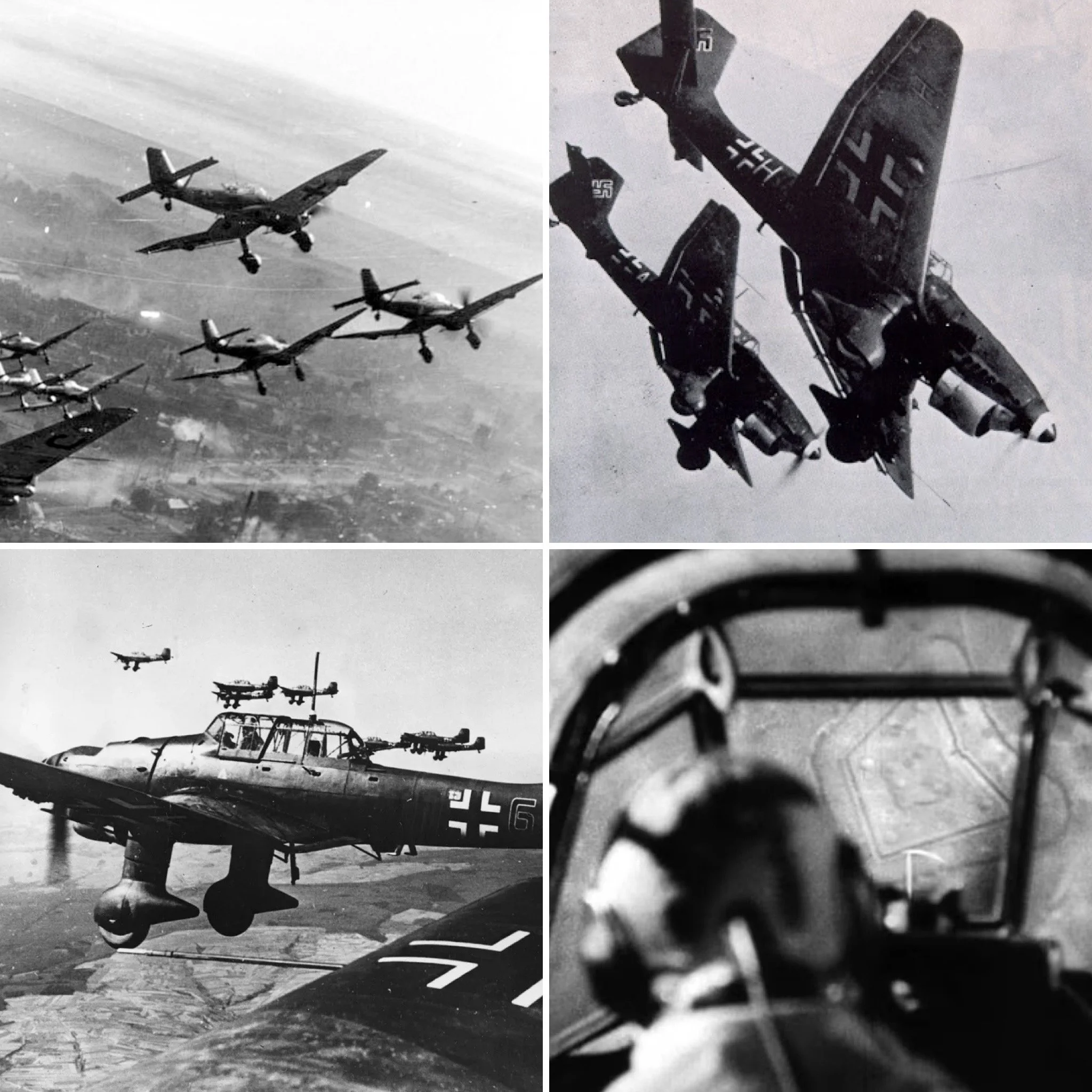 Image 2 of 12
Image 2 of 12

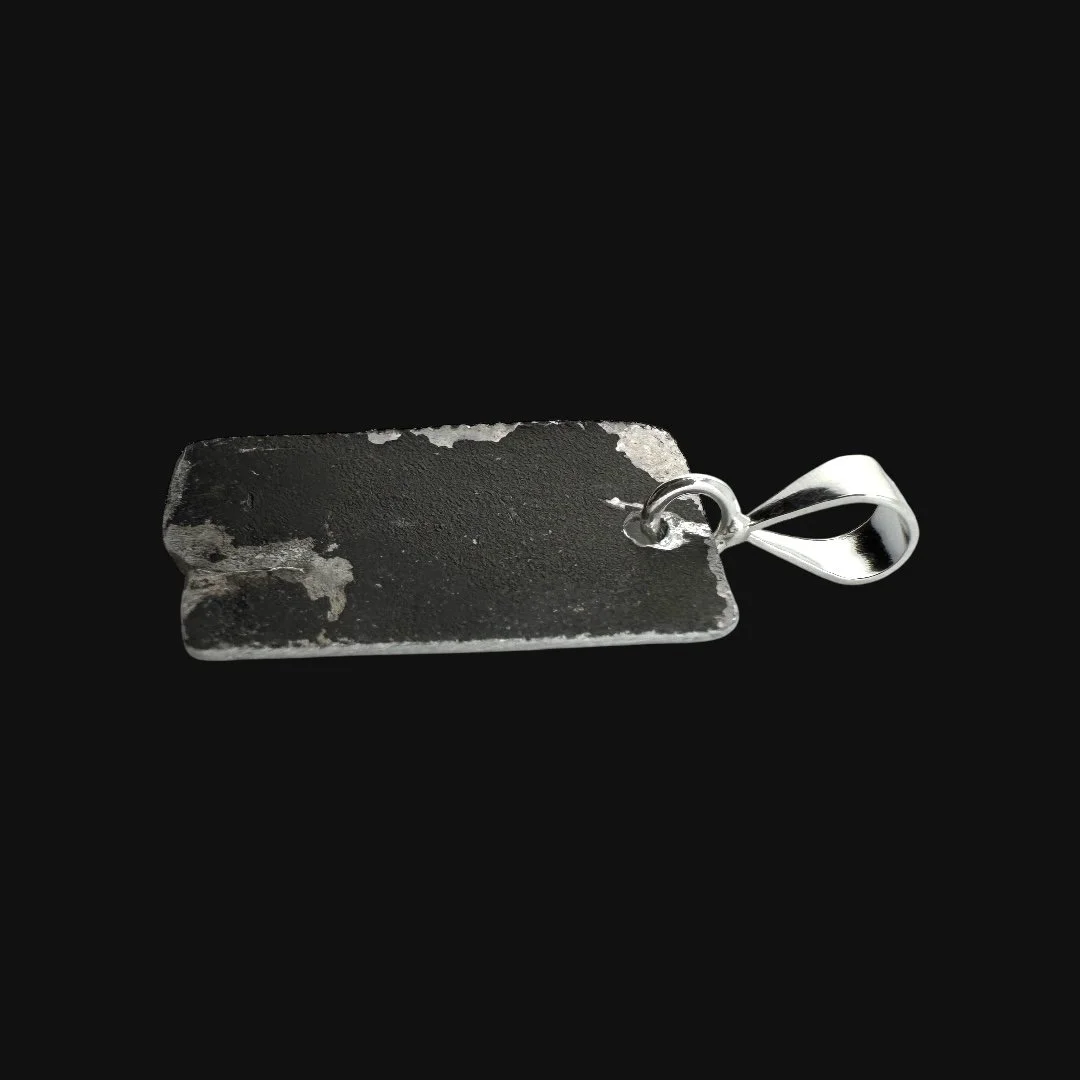 Image 3 of 12
Image 3 of 12

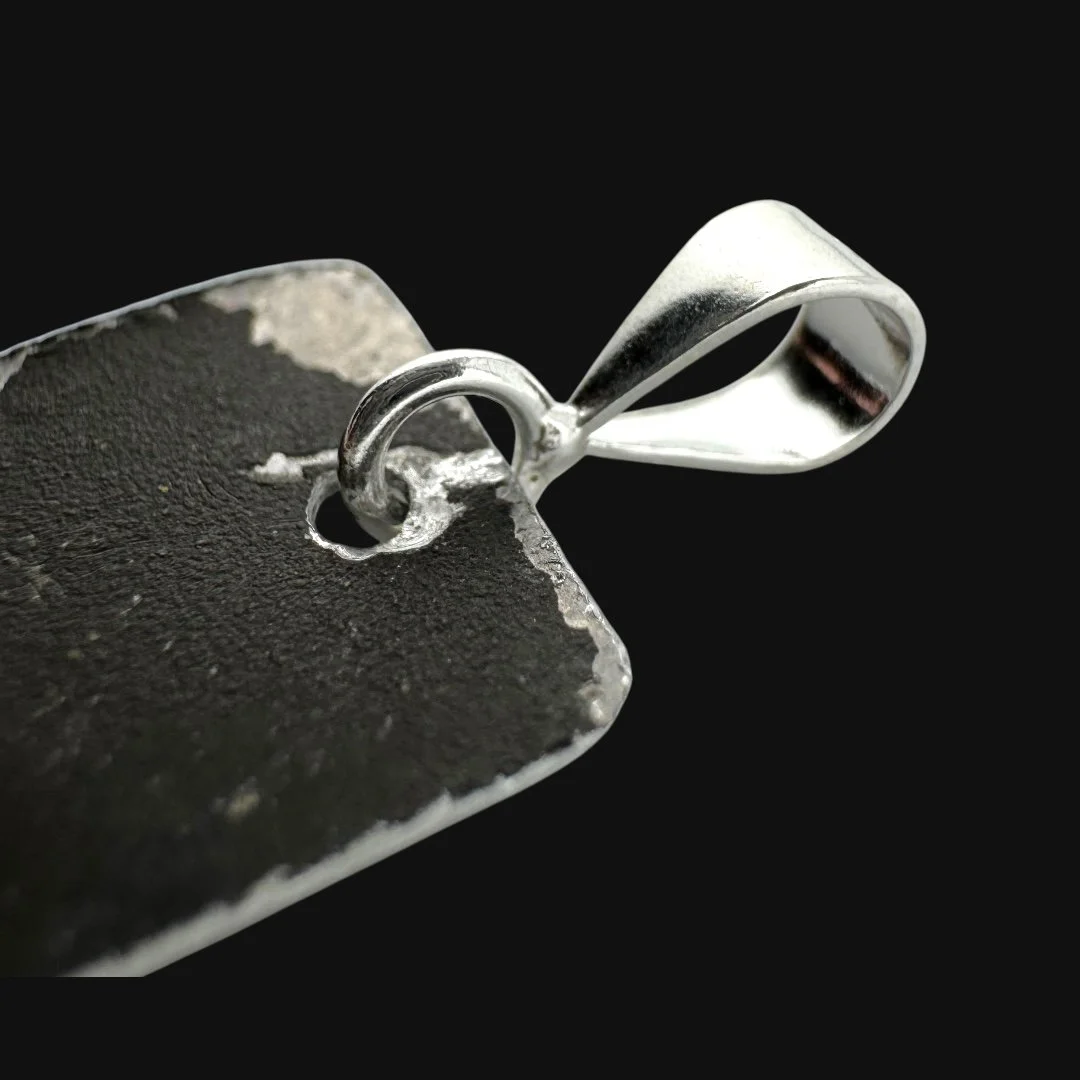 Image 4 of 12
Image 4 of 12

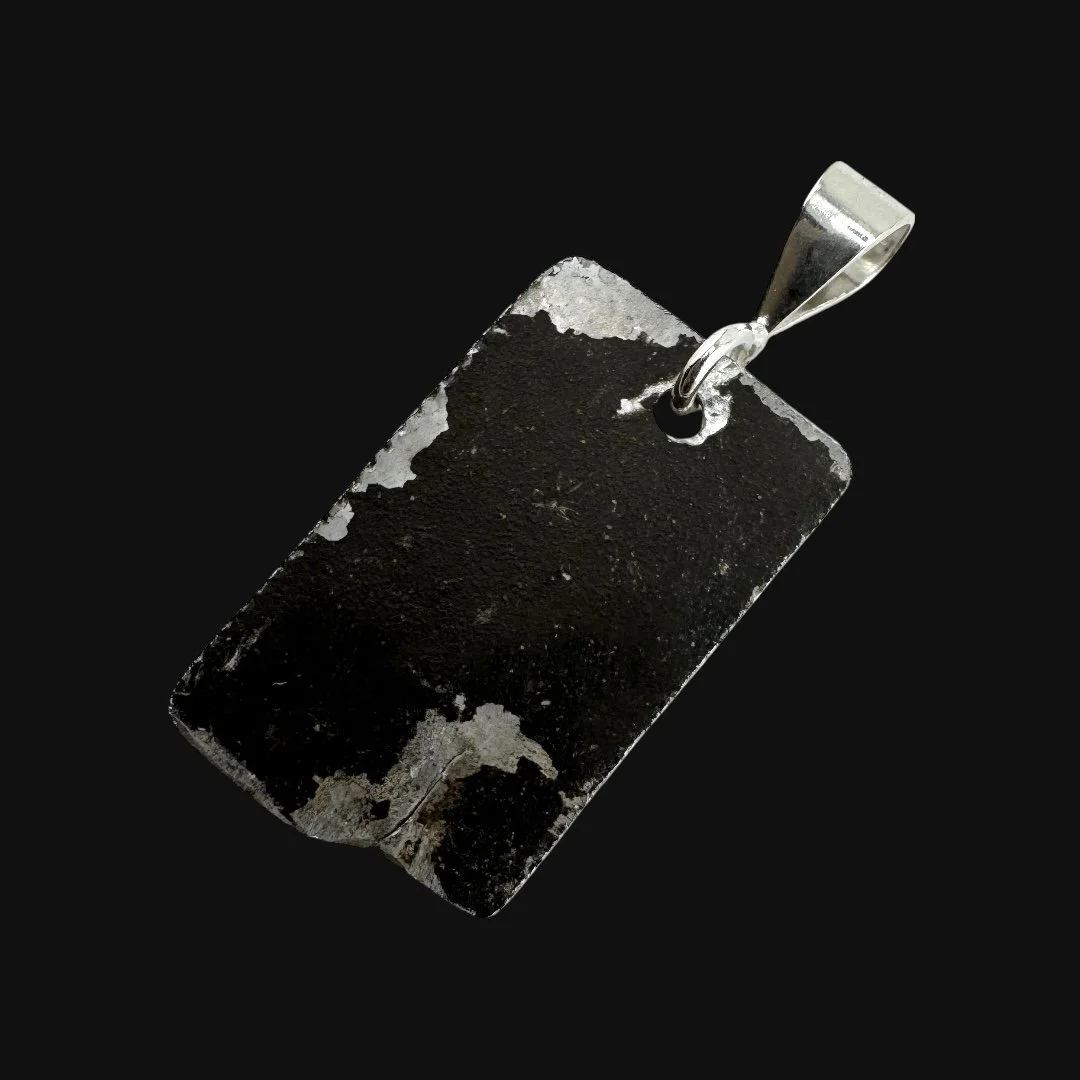 Image 5 of 12
Image 5 of 12

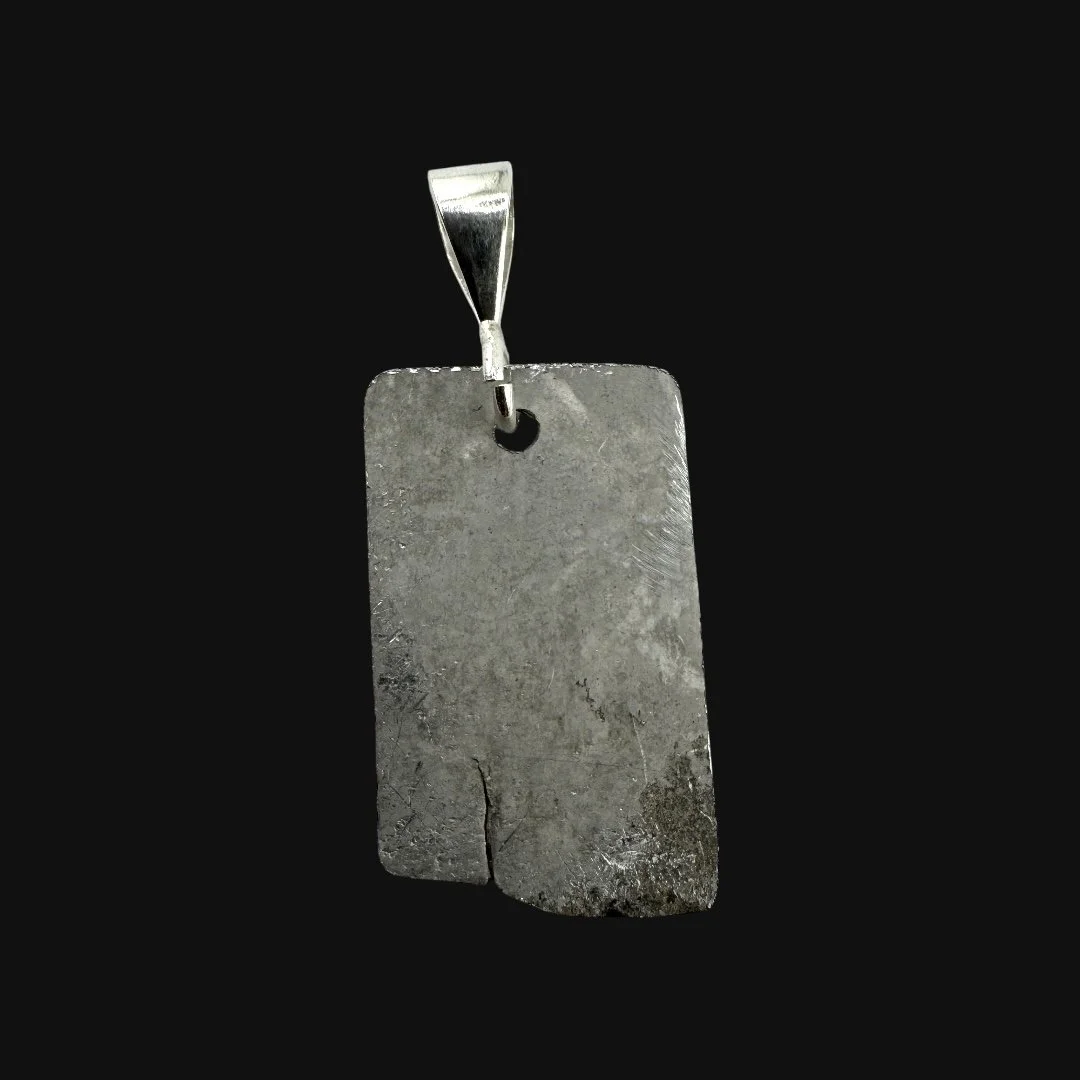 Image 6 of 12
Image 6 of 12

 Image 7 of 12
Image 7 of 12

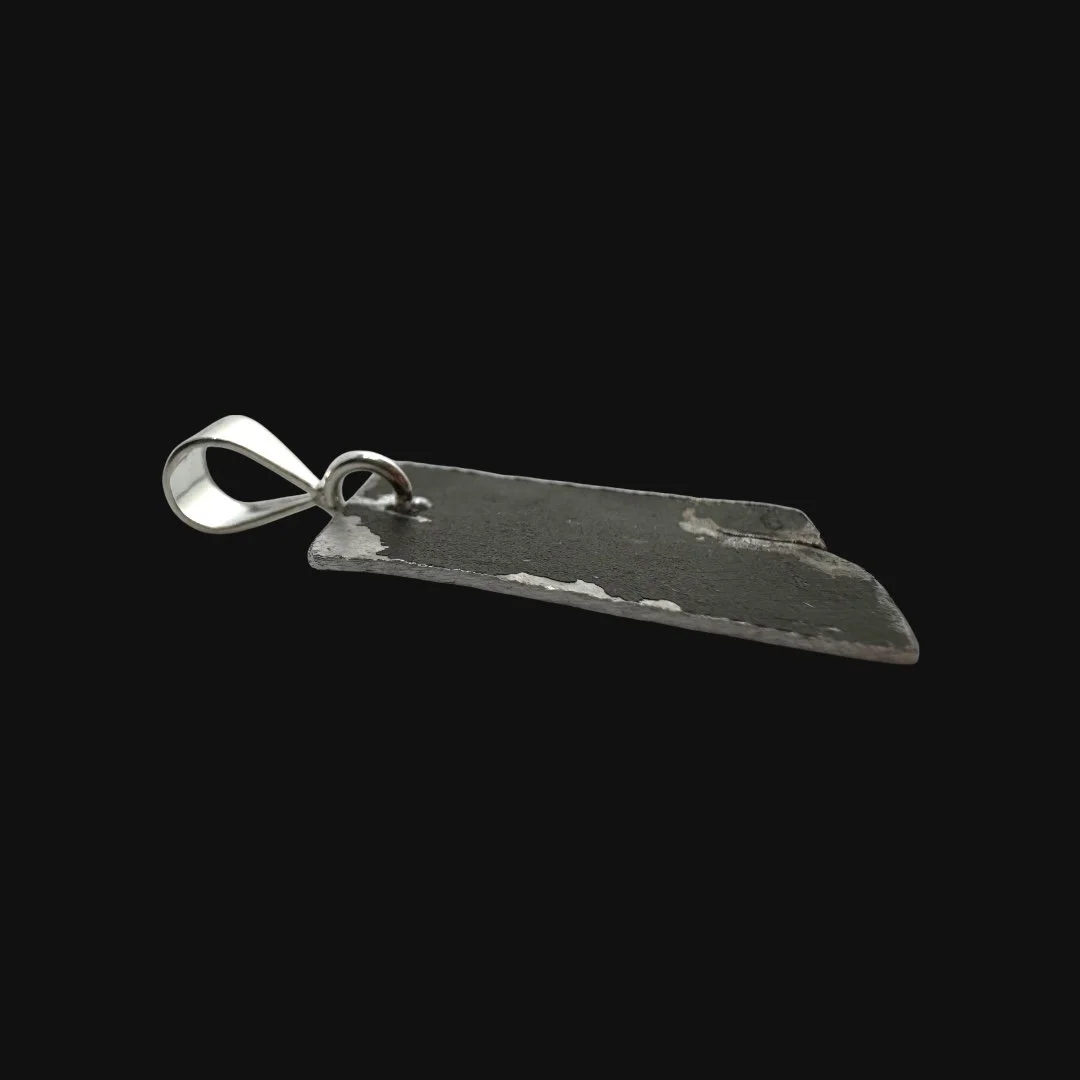 Image 8 of 12
Image 8 of 12

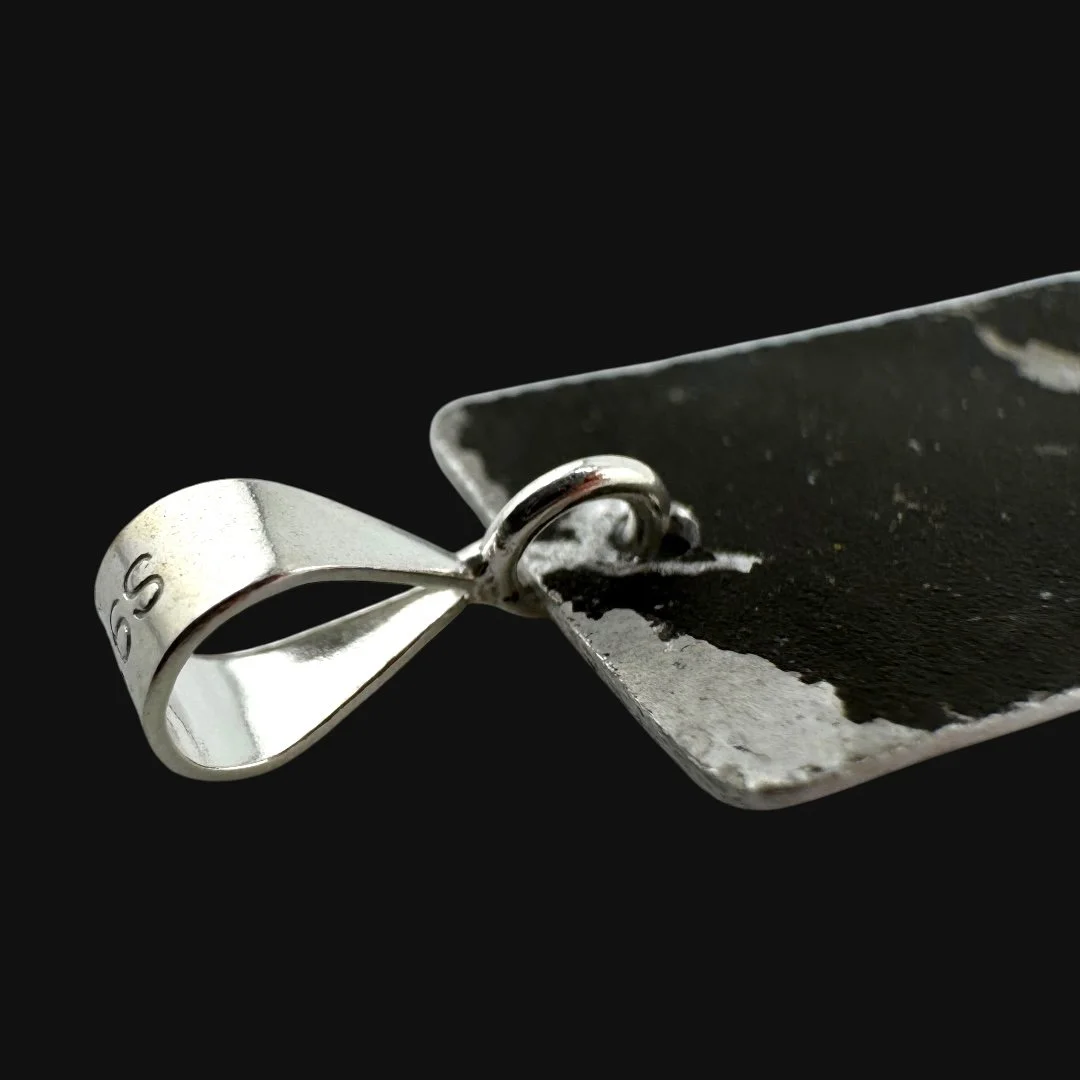 Image 9 of 12
Image 9 of 12

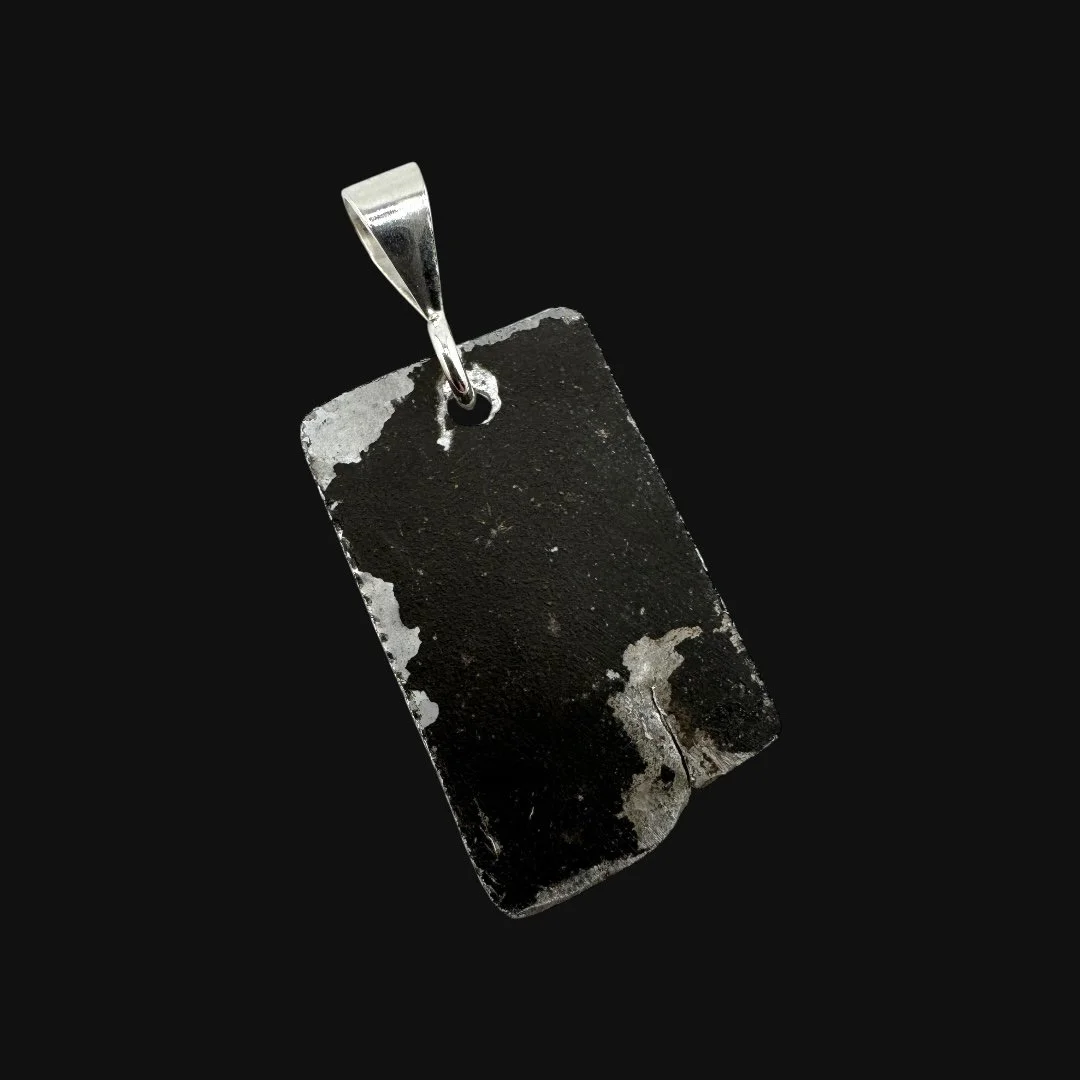 Image 10 of 12
Image 10 of 12

 Image 11 of 12
Image 11 of 12

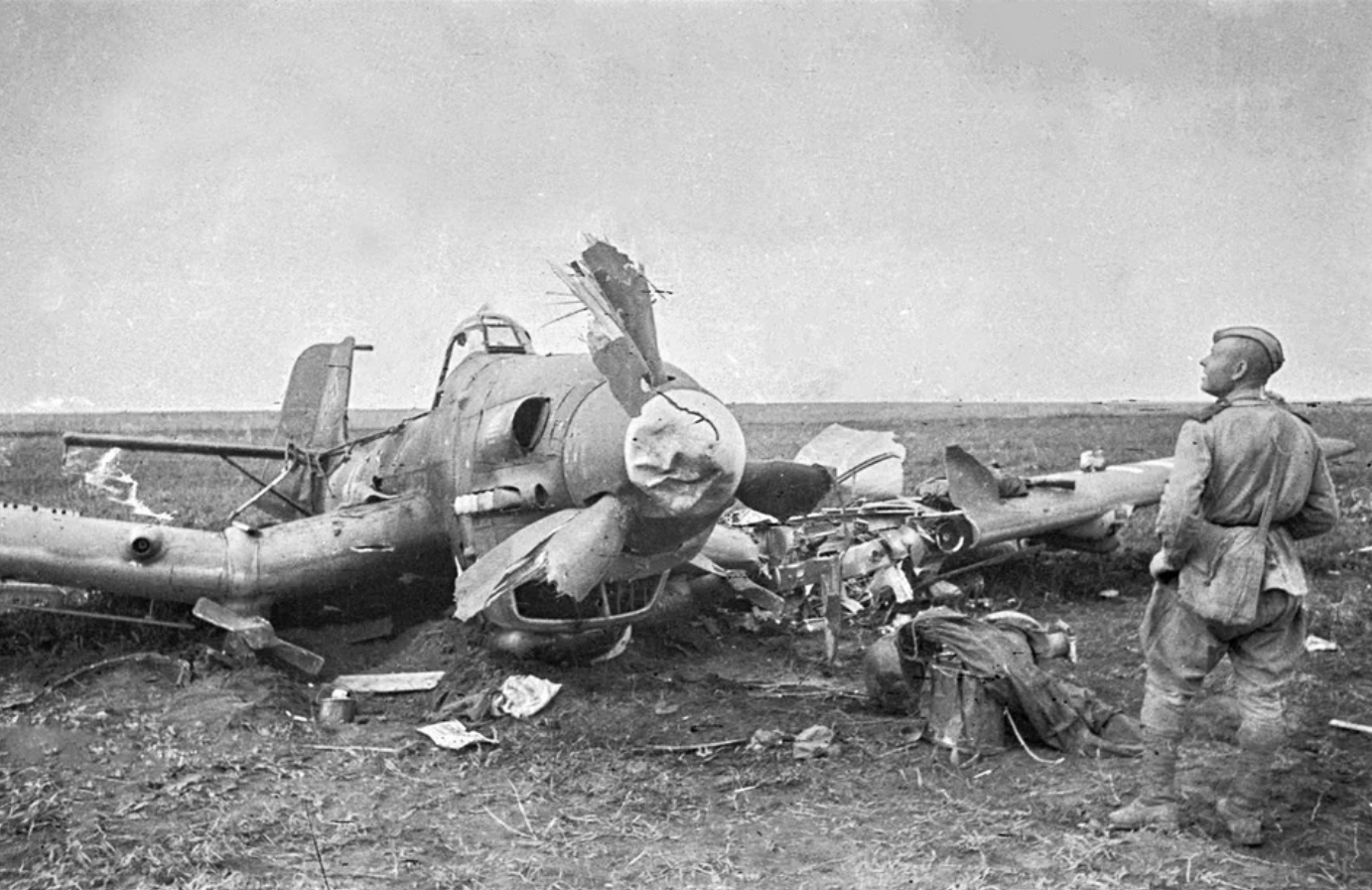 Image 12 of 12
Image 12 of 12













Original WWII German JU-87 "Combat Flown" Luftwaffe Dive Bomber Aircraft Metal Fragment Necklace Pendant (.925 Sterling Silver)
Comes with a hand-signed C.O.A. and a full historical research write-up
From: World War II
Dated: 1941-1945
Aircraft: Junkers Ju 87 - “Stuka”
Type: Dive Bomber & Ground-Attack Aircraft
Recovered: Combat Flown Wreckage Recovered From Eastern Front
National Origin: German (Luftwaffe)
Necklace Pendant Size: Roughly 1 inch x ½ inch
Pendant Clap Material: .925 Sterling Silver
*EACH WORLD WAR II “COMBAT FLOWN” AIRCRAFT METAL PENDANT IS HANDMADE AND TRULY ONE-OF-A-KIND. THIS IS THE EXACT WWII AIRCRAFT NECKLACE PENDANT YOU WILL RECEIVE.
Wearable History Collection:
This World War II necklace aircraft pendant is more truly one-of-a-kind. It is a preserved piece of an original WWII aircraft, transformed into a wearable artifact that carries with it the stories of a generation. No two pendants are alike, which makes each one truly unique and irreplaceable. Rich with aviation history, this “combat flown” aircraft pendant offers its wearer the rare chance to carry a genuine fragment of World War II aviation heritage. Every mark in the metal, every detail, holds a connection to the past and serves as a tangible reminder of courage, sacrifice, and resilience. As part of our exclusive Wearable History Collection, it is not only a timeless accessory but also a powerful conversation starter. Flown in the heat of combat during World War II and preserved across generations, this WWII aircraft pendant is a relic unlike any other. Featured in our Wearable History Collection, it represents a rare chance to wear a true fragment of the past.
Precision and Fear: The Historical Significance of the Ju 87 Dive Bomber:
The Junkers Ju 87 Stuka was one of the most distinctive and historically significant aircraft of the Second World War. Designed as a precision dive bomber, it featured inverted gull wings, fixed landing gear, and the infamous Jericho siren that created a terrifying wail as it dove. First tested in the Spanish Civil War, the Ju 87 proved the value of dive bombing in supporting ground forces, and when World War II began it became the spearhead of German blitzkrieg. In Poland and France, Stukas destroyed bridges, railways, and fortifications, helping clear the way for rapid armored advances. At Dunkirk they attacked retreating Allied troops and shipping, spreading panic as much with their sound as with their bombs.
Its limitations became clear during the Battle of Britain, where its slow speed and poor maneuverability left it highly vulnerable to RAF Spitfires and Hurricanes. Withdrawn from that campaign, the Ju 87 found new life on the Eastern Front, where Soviet air defenses were initially weak. Here it again became indispensable, destroying bridges and strongholds and, in its later G-variant, serving as a formidable anti-tank weapon. Pilots like Hans-Ulrich Rudel gained legendary reputations, with Rudel alone credited with destroying hundreds of Soviet tanks. Stukas supported major operations at Stalingrad and Kursk, where their precision and firepower were critical, even as Germany’s overall air superiority waned.
Beyond its battlefield effectiveness, the Ju 87 had immense psychological impact. Its screaming sirens became synonymous with terror from the skies, demoralizing enemy soldiers and civilians alike. The Stuka came to embody the image of blitzkrieg, a weapon not only of destruction but also of fear. While it became technologically outdated by the mid-war years, the Ju 87’s integration of close air support into ground operations influenced military doctrine for decades to come, laying the groundwork for modern ground-attack aircraft.
In retrospect, the Ju 87 Stuka’s legacy is one of both triumph and vulnerability. It demonstrated how precision bombing could amplify the effectiveness of ground offensives, but also how air superiority was essential for such aircraft to operate effectively. As both a practical weapon of war and a symbol of German power, the Ju 87 left an indelible mark on World War II, securing its place as one of the most iconic aircraft of the twentieth century.
Early War and Blitzkrieg Campaigns
Invasion of Poland (1939) – Used extensively to destroy railroads, bridges, and communications, crippling Polish defenses.
Norwegian Campaign (1940) – Stukas sank and damaged several Allied warships, including the British carrier HMS Glorious.
Battle of France (1940) – Played a major role in breaking the Maginot Line, blasting fortifications, and trapping Allied forces.
Battle of Dunkirk (1940) – Attacked Allied troops and evacuation ships, creating chaos during Operation Dynamo.
The Battle of Britain and the Mediterranean
Battle of Britain (1940) – Initially deployed to attack radar stations, airfields, and shipping, but suffered devastating losses to RAF fighters, forcing withdrawal.
Battle of Crete (1941) – Crucial in suppressing British defenses and sinking Royal Navy ships, helping Germany secure the island.
North African Campaign (1941–1943) – Provided ground support to Rommel’s Afrika Korps, targeting British armor and supply lines.
Eastern Front (Operation Barbarossa and beyond)
Operation Barbarossa (1941) – Opened the invasion of the Soviet Union, destroying bridges, supply columns, and airfields in the early blitz.
Siege of Sevastopol (1941–1942) – Stukas pounded Soviet fortifications during the long siege of the Crimean port.
Battle of Stalingrad (1942–1943) – Heavily used to bomb Soviet positions and supply routes during the street fighting.
Battle of Kursk (1943) – The Stuka G-variant, fitted with 37mm cannon, became a feared anti-tank weapon, flown by pilots such as Hans-Ulrich Rudel.
Final Years of the War
Defense of the Reich (1944–1945) – Stukas were increasingly obsolete but continued ground-attack and anti-tank roles on the Eastern Front.
Battle of Berlin (1945) – Flown in the final desperate defense, though few remained by this stage.
The Legacy Within This WWII Necklace Pendant:
This handcrafted World War II necklace pendant has been created from the very metal of a German Ju 87 Stuka dive bomber, once flown in combat during one of history’s most destructive conflicts. The Ju 87 was infamous for its terrifying dive sirens and precision strikes, a symbol of blitzkrieg that dominated the skies in the early war years. To hold this pendant is to hold a fragment of that past, a tangible piece of the aircraft that roared over battlefields from Poland and France to the Mediterranean and deep into the Eastern Front.
Every mark in the metal tells a story. It recalls the shriek of the Stuka’s dive, the smoke and fire of its bomb runs, and the endurance of the men, on both sides, who lived beneath those skies. Forged into a wearable piece, the pendant transforms a weapon of war into a symbol of remembrance, carrying with it the memory of courage, survival, and the heavy cost of global conflict.
Each pendant is entirely unique. No two carry the same scars or path through history. To wear it today is not simply to wear jewelry, but to carry with you a genuine piece of World War II. A natural conversation starter, it connects the present to the legacy of those who fought, endured, and were forever shaped by the war. This pendant is more than an accessory, it is a living fragment of history, honoring memory, sacrifice, and the enduring lessons of the past.
Comes with a hand-signed C.O.A. and a full historical research write-up
From: World War II
Dated: 1941-1945
Aircraft: Junkers Ju 87 - “Stuka”
Type: Dive Bomber & Ground-Attack Aircraft
Recovered: Combat Flown Wreckage Recovered From Eastern Front
National Origin: German (Luftwaffe)
Necklace Pendant Size: Roughly 1 inch x ½ inch
Pendant Clap Material: .925 Sterling Silver
*EACH WORLD WAR II “COMBAT FLOWN” AIRCRAFT METAL PENDANT IS HANDMADE AND TRULY ONE-OF-A-KIND. THIS IS THE EXACT WWII AIRCRAFT NECKLACE PENDANT YOU WILL RECEIVE.
Wearable History Collection:
This World War II necklace aircraft pendant is more truly one-of-a-kind. It is a preserved piece of an original WWII aircraft, transformed into a wearable artifact that carries with it the stories of a generation. No two pendants are alike, which makes each one truly unique and irreplaceable. Rich with aviation history, this “combat flown” aircraft pendant offers its wearer the rare chance to carry a genuine fragment of World War II aviation heritage. Every mark in the metal, every detail, holds a connection to the past and serves as a tangible reminder of courage, sacrifice, and resilience. As part of our exclusive Wearable History Collection, it is not only a timeless accessory but also a powerful conversation starter. Flown in the heat of combat during World War II and preserved across generations, this WWII aircraft pendant is a relic unlike any other. Featured in our Wearable History Collection, it represents a rare chance to wear a true fragment of the past.
Precision and Fear: The Historical Significance of the Ju 87 Dive Bomber:
The Junkers Ju 87 Stuka was one of the most distinctive and historically significant aircraft of the Second World War. Designed as a precision dive bomber, it featured inverted gull wings, fixed landing gear, and the infamous Jericho siren that created a terrifying wail as it dove. First tested in the Spanish Civil War, the Ju 87 proved the value of dive bombing in supporting ground forces, and when World War II began it became the spearhead of German blitzkrieg. In Poland and France, Stukas destroyed bridges, railways, and fortifications, helping clear the way for rapid armored advances. At Dunkirk they attacked retreating Allied troops and shipping, spreading panic as much with their sound as with their bombs.
Its limitations became clear during the Battle of Britain, where its slow speed and poor maneuverability left it highly vulnerable to RAF Spitfires and Hurricanes. Withdrawn from that campaign, the Ju 87 found new life on the Eastern Front, where Soviet air defenses were initially weak. Here it again became indispensable, destroying bridges and strongholds and, in its later G-variant, serving as a formidable anti-tank weapon. Pilots like Hans-Ulrich Rudel gained legendary reputations, with Rudel alone credited with destroying hundreds of Soviet tanks. Stukas supported major operations at Stalingrad and Kursk, where their precision and firepower were critical, even as Germany’s overall air superiority waned.
Beyond its battlefield effectiveness, the Ju 87 had immense psychological impact. Its screaming sirens became synonymous with terror from the skies, demoralizing enemy soldiers and civilians alike. The Stuka came to embody the image of blitzkrieg, a weapon not only of destruction but also of fear. While it became technologically outdated by the mid-war years, the Ju 87’s integration of close air support into ground operations influenced military doctrine for decades to come, laying the groundwork for modern ground-attack aircraft.
In retrospect, the Ju 87 Stuka’s legacy is one of both triumph and vulnerability. It demonstrated how precision bombing could amplify the effectiveness of ground offensives, but also how air superiority was essential for such aircraft to operate effectively. As both a practical weapon of war and a symbol of German power, the Ju 87 left an indelible mark on World War II, securing its place as one of the most iconic aircraft of the twentieth century.
Early War and Blitzkrieg Campaigns
Invasion of Poland (1939) – Used extensively to destroy railroads, bridges, and communications, crippling Polish defenses.
Norwegian Campaign (1940) – Stukas sank and damaged several Allied warships, including the British carrier HMS Glorious.
Battle of France (1940) – Played a major role in breaking the Maginot Line, blasting fortifications, and trapping Allied forces.
Battle of Dunkirk (1940) – Attacked Allied troops and evacuation ships, creating chaos during Operation Dynamo.
The Battle of Britain and the Mediterranean
Battle of Britain (1940) – Initially deployed to attack radar stations, airfields, and shipping, but suffered devastating losses to RAF fighters, forcing withdrawal.
Battle of Crete (1941) – Crucial in suppressing British defenses and sinking Royal Navy ships, helping Germany secure the island.
North African Campaign (1941–1943) – Provided ground support to Rommel’s Afrika Korps, targeting British armor and supply lines.
Eastern Front (Operation Barbarossa and beyond)
Operation Barbarossa (1941) – Opened the invasion of the Soviet Union, destroying bridges, supply columns, and airfields in the early blitz.
Siege of Sevastopol (1941–1942) – Stukas pounded Soviet fortifications during the long siege of the Crimean port.
Battle of Stalingrad (1942–1943) – Heavily used to bomb Soviet positions and supply routes during the street fighting.
Battle of Kursk (1943) – The Stuka G-variant, fitted with 37mm cannon, became a feared anti-tank weapon, flown by pilots such as Hans-Ulrich Rudel.
Final Years of the War
Defense of the Reich (1944–1945) – Stukas were increasingly obsolete but continued ground-attack and anti-tank roles on the Eastern Front.
Battle of Berlin (1945) – Flown in the final desperate defense, though few remained by this stage.
The Legacy Within This WWII Necklace Pendant:
This handcrafted World War II necklace pendant has been created from the very metal of a German Ju 87 Stuka dive bomber, once flown in combat during one of history’s most destructive conflicts. The Ju 87 was infamous for its terrifying dive sirens and precision strikes, a symbol of blitzkrieg that dominated the skies in the early war years. To hold this pendant is to hold a fragment of that past, a tangible piece of the aircraft that roared over battlefields from Poland and France to the Mediterranean and deep into the Eastern Front.
Every mark in the metal tells a story. It recalls the shriek of the Stuka’s dive, the smoke and fire of its bomb runs, and the endurance of the men, on both sides, who lived beneath those skies. Forged into a wearable piece, the pendant transforms a weapon of war into a symbol of remembrance, carrying with it the memory of courage, survival, and the heavy cost of global conflict.
Each pendant is entirely unique. No two carry the same scars or path through history. To wear it today is not simply to wear jewelry, but to carry with you a genuine piece of World War II. A natural conversation starter, it connects the present to the legacy of those who fought, endured, and were forever shaped by the war. This pendant is more than an accessory, it is a living fragment of history, honoring memory, sacrifice, and the enduring lessons of the past.
